








It's easy to keep your skin safer in the summer sun if you have the right sunscreen.
UCLA Health offers some tips for picking the best type and SPF level.
Getting sunburned just five times in a lifetime doubles the risk of getting melanoma, the most serious skin cancer, so making sure you're protected is worth the effort, the experts at UCLA Health said in a news release.
Types of sunscreens can be divided into two categories: mineral and chemical. Each type has its pros and cons.
Mineral sunscreen sits on the skin's surface. It physically blocks ultraviolet (UV) light before those rays can penetrate the skin.
While offering instant protection, it can be harder to rub in, needs to be applied more frequently and tends to leave a white film on the skin. Yet, it's also gentler than chemical sunblock, making it a good choice for sensitive skin, according to UCLA Health. Mineral sunscreen contains titanium dioxide and zinc oxide, both recognized as safe and effective by the U.S. Food and Drug Administration.
Chemical sunscreens allow UV light to penetrate skin, after which the chemicals convert the UV light into heat. This is released from the skin.
The downsides are that chemical sunscreens need to be applied at least
Celebrate
20 minutes before sun exposure and there are concerns about the ingredients in chemical sunscreens, especially oxybenzone, according to UCLA Health.
Some of the ingredients in these sunscreens may cause environmental issues, including damage to coral reefs. They may also pose health risks such as hormone disruption and allergic skin reactions.
Yet, they're also easy to rub in and leave less residue.
The FDA is waiting for more safety data before labeling them as safe and effective. Experts say the health risks of sun exposure far outweigh the potential risk of absorbing sunscreen chemicals.
When choosing the SPF, or sun protection factor, know that the higher the number, the longer the protection should last. With SPF 30, for example, it should take you 30 times longer to burn than if you weren't wearing sunscreen. But there's more to it than that.
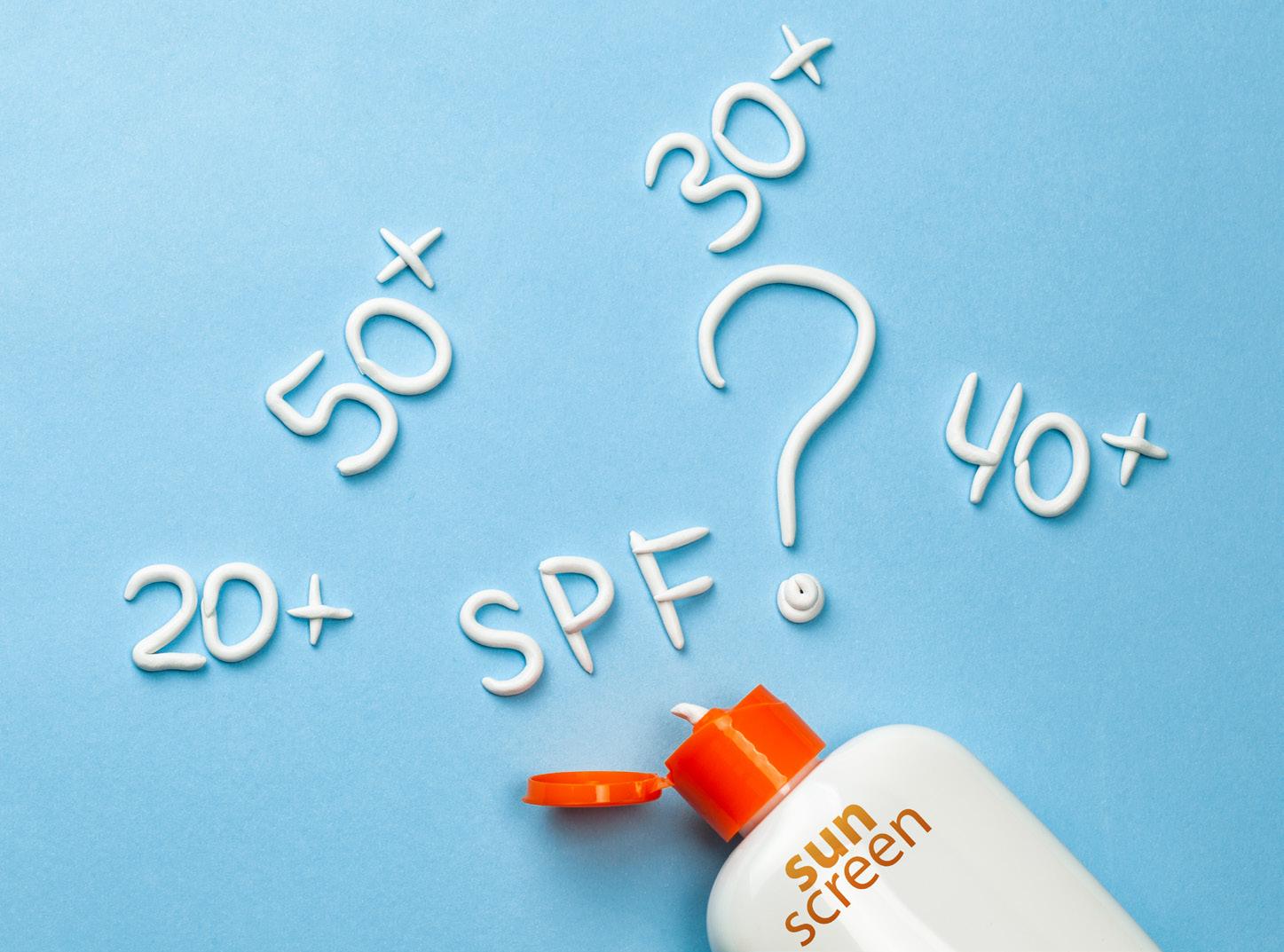
All sunscreens protect against UVB rays, the main cause of sunburn and skin cancers. Broad-spectrum SPF also protects against UVA rays.
Sunscreen that is SPF 30 lets 3% of rays through. A higher protection number, SPF 50, allows 2% of rays through.
It's important to reapply, especially if you're sweating and swimming. The Skin Cancer Foundation
recommends using water-resistant, broad-spectrum sunscreen with SPF 30 or higher. You should reapply every two hours or immediately after swimming or sweating.
SPF protection above 50 is only slightly better than SPF 30, so reaching for a higher number doesn't matter as much.
What's important about the application method is this: what you are more likely to use and reapply.
If that's lotion, the Skin Cancer Foundation recommends applying at least 1 ounce, which is also 2 tablespoons or the amount that fills a shot glass.
For spray, keep applying until your skin glistens. The bottle may say “no rub,” but smoothing it into
your skin will ensure even coverage. Avoid using aerosol sprays on or near your face because they can contain ingredients that, when inhaled deeply, may cause irritation and possibly damage your lungs.

It may be better to avoid spray for young children, but you can also spray it onto hands and rub it onto your face or your child.
Stick sunscreen is great for small areas, such as the face and ears. Make four passes with the sunscreen over each area you're protecting, UCLA Health advises. Rub the sunscreen in afterward, for even coverage.
Even with this protection, opt to seek shade and wear protective clothing whenever possible.
Learn
Everyone deserves to be cared for and to live well. So, at Excellus BlueCross BlueShield, we’re more focused than ever on making care more accessible in our community. Through affordable plan options, community investments, partnerships and education, we’re working to address inequities to make Upstate New York a better place to live. We’re proud to celebrate the LGBTQ+ community and work toward a world where everyone feels affirmed and respected.
ExcellusBCBS.com/Podcast


Getting you better, sooner. It’s why more patients are choosing Crouse Health — and why our minimally invasive robotic surgery program continues to grow. In fact, Crouse has the largest robotic surgery program in the region, with the most surgeons performing a wide variety of procedures — morethan15,000 since 2008. The result? The most experienced team using the latest innovative techniques to get you back to health faster. And more reasons to say,“Take Me to Crouse!”
crouse.org/robotics
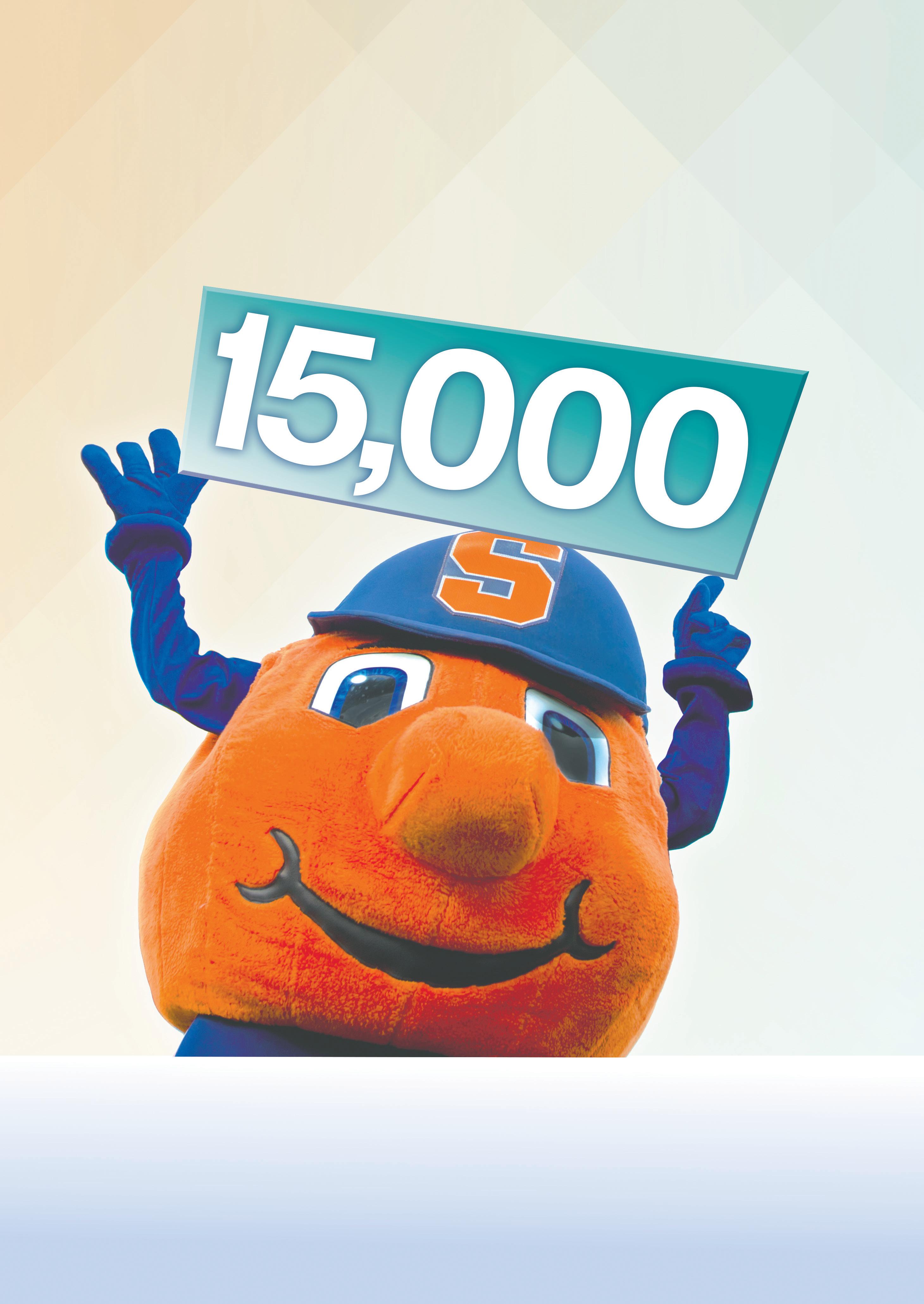
First, on the provider side, things are bleak. Nineteen hospitals closed last year due to bankruptcy. Industry experts estimate 630 hospitals are on the brink of financial disaster this year. Two hundred of those shaky hospitals serve rural or isolated populations. The pandemic hit nurses and physicians hard. We are entering a veritable crisis in nursing. The ANA estimates we will need 275,000 more nurses between now and 2030. The nursing shortage is worse than any other profession. The AMA estimates we will need between 38,000 and 124,000 more physicians over the next 12 years. And to make matters worse, the US population is aging. But the news isn’t all bad. The top six insurance companies made more than $41 billion last year. United Health Group lead the pack with $20.6 billion. The next five were Cigna $6.7 billion; Elevance, $6 billion; CVS, $4.2 billion; Humana, $2.8 billion; and Cetene, $1.2 billion.

As if things aren’t difficult enough for financially struggling hospitals, Centers for Medicare & Medicaid Services (CMS) is seemingly piling it on by stepping up enforcement of the requirement for hospitals to post prices for several select procedures online for the sake of transparency. Cash strapped hospitals are being fined hundreds of thousands of dollars. By posting prices, consumers can (supposedly) shop around for CT scans, surgery and other procedures. There are problems with the price posting requirement. First, most of us, if we know it or not, are in an organized hospital-centric
healthcare system. Your physician is going to refer you to providers within the system, limiting your choice of a hospital or CT scan. Although your insurance may allow you to go to any participating provider (shop around), for the sake of continuity you are better off staying within your system. Second, 90% of us are insured so none of us will ever pay the full price. It is irrelevant. Your commercial insurer has negotiated what it will pay on your behalf. Medicare and Medicaid have set what they will pay on your behalf. Your copay (or deductible) is determined by your insurer. We have all seen an “explanation of benefits” letter from our insurer indicating the hospital “priceorcharge” and what the insurer ultimately paid. The difference is typically astounding. Third, unlike a car or article of clothing, a hospital price has nothing to do with quality. It is a meaningless number so shopping around based on price is a fool’s errand. Out-of-pocket expenses are the price we pay. Most hospital billing offices can give you a good idea of what you will pay out of pocket based on your insurance.
If a country (England, Canada, France, Germany, Sweden, etc.) provides universal care for all, critics decry it as socialism. In our country, critics call Medicare and proposed “Medicare for all” plans nothing more than socialism. So, is Medicare still socialism when it is managed by a commercial carrier? Humana made $2.8 billion last year. Virtually all their business and profits were derived from running Medicare and Medicaid plans. United made more than $20 billion last year. One third of their business (and profit) was derived from Medicare and Medicaid plans. We pay into Medicare via payroll taxes all our life. Then, we are still faced with paying more via deductibles, copays and coinsurance. Now commercial insurers are raking in huge profits. But at least it’s not “socialism!”
Even a study recently published by JAMA (Journal of the American Medical Association) concurs. According to the study, chatbots answered more patient queries quicker and with empathy when compared to written physician notes. But instead of replacing physicians, the study proposes that chatbot + MD = better care. In fact, AI should assuage the projected physician and nurse shortage by freeing them up to focus on more critical cases.
The American Psychological Association has developed science-based guidelines regarding social media use by teens. There has been a surge in depression, anxiety and loneliness among teens and young adults attributable to social media. The guidelines are directed primarily at teens, parents, counselors and teachers. The APA recommends teens should receive training on the use of social media and parents should monitor social media use and limit screen time.

I discussed this briefly last month. In various studies, consumers are very satisfied with AI or chatbots.
In a week (as of this writing in early May), a federal three judge panel will determine the fate of the medical abortion pill. All three- judges have a history of ruling against abortion access or have stated an anti-access position. Most national polls and surveys reveal the vast majority prefers that mifepristone remain available on the market.

I have written about the fact that medical debt is the leading cause of bankruptcy in our country. The good news is that medical debt can no longer be considered by credit-rating companies. A reader of my column forwarded me some more good news. A nonprofit called RIP Medical Debt can help. Its website address is https://ripmedicaldebt.org.

George W. Chapman is a healthcare business consultant who works exclusively with physicians, hospitals and healthcare organizations. He operates GW Chapman Consulting based in Syracuse. Email him at gwc@gwchapmanconsulting.com.
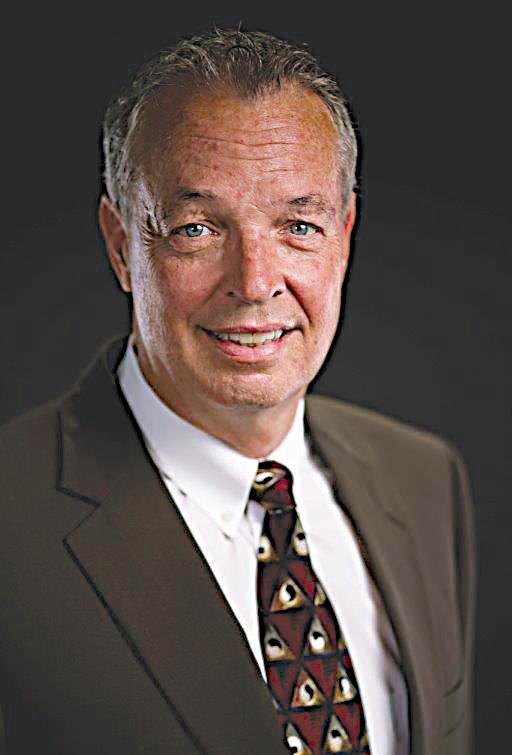
19 hospitals closed last year due to bankruptcy. Another 630 are on the brink of financial disaster this year. Meanwhile, insurers post strong profits
Fewer U.S. adults are smoking cigarettes, as rates dropped again last year, according to federal health officials.

In all, one in nine American adults smoked cigarettes last year, an all-time low, and a significant change from the 1960s when 42% smoked.
The results weren't all positive, the Associated Press reported, as vaping rose to about one in 17 adults. For 2022, use of electronic cigarettes was about 6% compared to 4.5% the year before.
These preliminary findings are from a survey of more than 27,000 adults by the U.S. Centers for Disease Control and Prevention. The findings are sometimes revised after further analysis.

“I think that smoking will contin-
ue to ebb downwards, but whether the prevalence of nicotine addiction will drop, given the rise of electronic products, is not clear,” Jonathan Samet, dean of the Colorado School of Public Health in Aurora, told the AP.
On average, crashes claimed the lives of 117 people a day — more than 42,000 in all for 2022
Traffic deaths are down on U.S. roadways, but the small drop pales in comparison to the surging rate of recent years.
Deaths in traffic crashes fell 0.3% last year compared to 2021, according to the U.S. National Highway Traffic Safety Administration (NHTSA).
On average, crashes claimed the lives of 117 people a day — more than 42,000 in all for 2022.
“Any reduction in roadway deaths is positive, but the minor decrease announced by NHTSA follows an unprecedented pandemic-fueled surge in roadway fatalities and dangerous driving,” said Jonathan Adkins, chief executive officer of the Governors Highway Safety Association (GHSA). He spoke in a news release from the governors' group responding to the NHTSA announcement.
The GHSA noted that traffic deaths surged 30% over the past decade. Between 2019 and 2022, they rose from 36,355 to 42,795, an increase of nearly 18%.
Dangerous driving behaviors, including speeding, impaired driving and not wearing a seat belt all increased between 2020 and 2021.
Pedestrian deaths reached a 40-year high of nearly 7,500 in 2021, according to a GHSA analysis. Early indications are that 2022 was also a deadly year for people walking, the group said.
“These roadway deaths are heartbreaking, unacceptable and preventable," Adkins said. "We will not accept such incremental safety progress after two years of escalating deaths and more dangerous driving on U.S. roads.”
Adkins pointed an approach outlined in the U.S. Department of Transportation's National Roadway Safety Strategy.
It calls for a number of measures, such as equitable traffic enforcement; infrastructure that slows down drivers and protects pedestrians, bicyclists and other non motorized road users; and community engagement campaigns developed with local input. It also recommends vehicle technology that protects people both inside and outside the vehicle and investments in post-crash care.


call 315-749-7070.

IGHmohawkvalley@gmail.com
Editor & Publisher: Wagner Dotto • Associate Editor: Stefan Yablonski
Contributing Writers: Barbara Pierce, Deb Dittner, Gwenn Voelckers, David Podos, Deborah Jeanne Sergeant, Anne Palumbo, Daniel Baldwin
Advertising: Amy Gagliano: 315-402-3370 • Email: amyIGHmv@gmail.com
Layout & Design: Angel Campos-Toro • Office Manager: Allison Lockwood





Have you fallen off the social circuit?
There’s no time like spring to hop back on!
The fear of walking into an event by yourself or the discomfort of being “third wheel” can keep lots of single women and men home on the weekend.
Don’t I know it!
Though it was years ago, I still remember the dismal details that followed an invitation to a relative’s wedding. It wasn’t long after my divorce and I surprised myself by actually giving it consideration. What was I thinking?! A wedding? Alone?
But I like marriage ceremonies and I wanted to reconnect with some friends and relatives I hadn’t seen in some time. Plus, it was a reason to dress up and get out of the house.
So on that fateful day, I pulled up to the church, parked and sat in my car. There I waited. And watched. And waited some more. Then withered.
I watched one happy couple after the other walking in, holding hands, laughing and looking oh so in love. I could feel my blood pressure rising and my courage crumbling.
I started to think, “What am I doing here?” And then a surge of “poor me” self-talk showed up and robbed me of my resolve. I sat there in my pretty dress and pumps, unable to muster the confidence to enter the
church alone.
I turned on the ignition and returned home to my empty apartment.
Disappointed in myself, I vowed not to let something like that happen again. I wasn’t going to miss out on life’s experiences just because I was single. In that moment, I made a promise to myself: I wouldn’t let my fears and insecurities keep me confined at home and within a safe circle of women friends.
Learning to do things solo and to actually enjoy myself, took time, practice and, frankly, some guts. Over time, I became increasingly comfortable socializing in a couples’ world.
Here’s how:
Part of what kept me from going out to eat or to a movie by myself was my concern about what people would think of me — or, more accurately, what I thought they would think of me. Did I have no friends? Was I undesirable company? Or worse, was I on the prowl?
Overcoming self-conscious thinking was essential to moving forward and out of my house.

What do you think when you see someone walking into an event alone or sitting by themselves at Starbucks
reading the paper? Do you assign negative attributes to them? Probably not. You likely don’t give it a second thought. Or maybe you secretly admire their confidence and ability to enjoy their own good company.
Keep this in mind the next time your fears and doubts keep you from venturing out alone.
If you’ve fallen off the social circuit, it’s your responsibility to find a way back on. You need to make the first move, and one of the best ways to get back onto invitation lists is to embrace the theory of reciprocity: You invite people into your world, and they, in turn, will invite you into theirs.
No need to go overboard; inviting a few friends over for coffee or a cookout will get the ball rolling. Your social network will begin to grow and before you know it, you’ll find yourself enjoying the company of good friends, both old and new.
Be prepared to bump into your ex
If concerns about running into an ex-spouse or significant other at a social event keeps you from accepting invitations, be prepared.
Before you go, anticipate and visualize running into your ex. See yourself handling the encounter with grace and, most importantly, brevity. A few pleasantries and a polite “take care” will help you move past the encounter in a relatively quick and painless manner.
Bumping into an ex may be inevitable depending on your situation, so gear up, grin and bear it, and get going on your way.
Even after all these years of living alone and attending social engagements on my own, I still don’t relish the thought of walking into an event by myself. In fact, to make it more palatable, I developed a fivestep formula to ease my way in — and it has never failed me.
Here is my game plan:
1. Pull up to the event and gather my thoughts in the car.
2. Repeat my mantra: “All I need is within me now.”
3. Take a few deep breaths.
4. Remind myself to be myself and to be curious about others.
5. Enter the event and make a beeline for the host to say hello and introduce myself to others standing nearby.
After connecting with the host and a few guests, I can more easily enter into universally accepted smalltalk subjects: books, travel, food, movies and sports (or more precisely, pickleball).

Feeling good about living alone often means confronting social, as well as emotional, challenges. Getting comfortable in a couples’ world is among them. But once mastered, it gets easier and easier. Even fun!
Gwenn Voelckers is the founder and facilitator of Alone and Content, empowerment workshops for women and author of “Alone and Content,” a collection of inspiring essays for those who live alone. For information about her workshops, to purchase her book, or invite her to speak, visit www. aloneandcontent.com
Community Foundation of Herkimer and Oneida Counties has invested over $100 million in the community, says organization’s president. Nonprofit still has an endowment of over $170 million
David L. Podos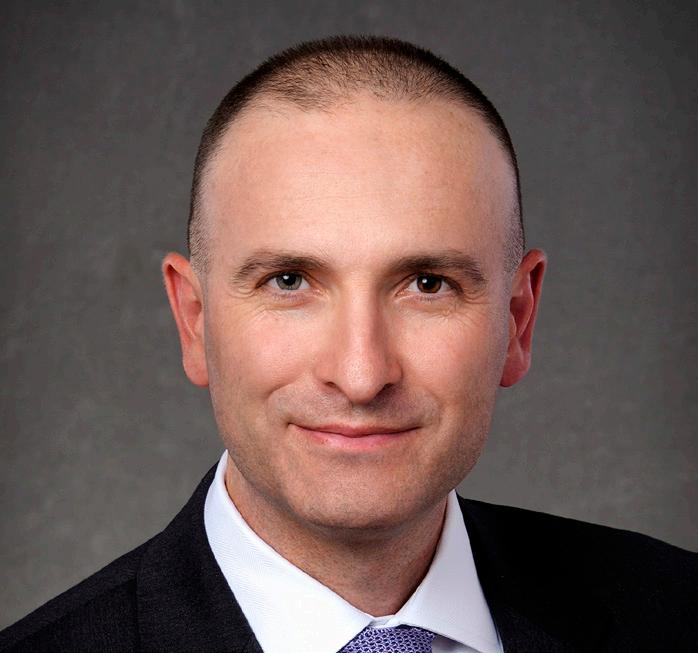
Q: What is the historical background of the Community Foundation?
A: The foundation has been in existence in Utica since 1952. We are a donor-based organization where donors invest and we are a grant maker. Over time, our investment portfolio has grown from the first handful of donors in the 1950s to the present time where we have more than 500 funders in our portfolio. To give your readers a perspective, last year we celebrated putting more than $100 million into the community
through grants [over the past 70 plus years]. Incredible as that is, our endowment presently is more than $170 million. So, the power of investment into the community is quite powerful.
Q: Those numbers are certainly incredible. That said, who was the first donor way back in 1952?
A: Her name was Rosamond Childs and she was our first donor. She had a desire to give back to her community for future needs, which is quite interesting, because Utica was a much different place at the
More than 70% of Black young people aged 12 to 17 who smoke use menthol cigarettes.
Of Black smokers aged 18 to 24, 93% started with menthol cigarettes. In 2019, approximately 85% of non-Hispanic Black or African American adults who smoked used menthol cigarettes, the highest percentage of menthol cigarette use of any racial or ethnic group.
These statistics should not be a surprise, as they are the result of a well-executed marketing effort.
The CDC has called out the tobacco industry for targeting Black Americans with menthol cigarette advertising, giveaways, special
pricing, lifestyle branding and event sponsorships: The industry’s goal is to get Black youth addicted so they become customers for life.
“Nobody inhales cigarette smoke for the first time and thinks it feels good,” says physician Nicholas Massa, MD, vice president of medical affairs, commercial line of business, Excellus BlueCross BlueShield.
“That’s why tobacco companies seek to take the harsh edge off that initial experience with flavorings, including menthol, so first-timers will continue to sample the product and get hooked.” The nicotine in cigarettes is highly addictive and adding menthol creates a cooling sensation in the throat and airways, making the
time. It was a vibrant bustling very economically sustainable city. So, for donors back then, like Ms. Childs, to come together and think about future needs that the city might be facing someday was pretty impressive.
Q: I’m assuming that if someone wanted to donate to the foundation to help the area, the donor can be anyone living anywhere, not just in the city of Utica and or other areas of Oneida and Herkimer counties. Is that correct?
A: That’s correct. This is placebased philanthropy. So, people who are from here, or came here from another geographic area for instance and built a business, bought a home, and raised their families in this region, or for any other reasons why they care about this area, they will invest with us to help make the community better. We actually have donors from all over the world. One of our donors lives in England who has a scholarship fund here through the foundation.
Q: As a community foundation you help hundreds of non-for-profit agencies because of this, those agencies are able to continue to provide services to the community. What is the process that someone has to go through for consideration of receiving monies from the foundation?
A: Well, traditionally we had grant applications where you would come to the office and pick up a grant application. But now you can just pick up the phone and call us and let us know what your need is. Is it an emergency need or an overall need? So, it’s really about the relationships we have with our nonprofits. That said, once we get to know you and have an idea what your need is, we do have certain grant rounds (times) where we are accepting applications; those are now all online. Some of our peers have very specific grant round timing, for instance, some are quarterly, some are monthly, etc.
Q: Does the foundation have just restricted grants or are they unrestricted?
A: That’s a great question. Some of our donors have put restrictions on who receives the grant money and we also have unrestricted grants as well. Percentage-wise we are close to 70% unrestricted verses 30% restricted. Our foundation is one of the more unrestricted community foundations which gives us great volume and lat-
smoke feel easier to inhale.
Menthol is a chemical compound found naturally in peppermint and other similar plants. According to the CDC, some research shows that menthol cigarettes may be more addictive than non menthol cigarettes because menthol can change the way the brain registers the sensations of taste and pain.
“Projections from the U.S. Census Bureau show the death rate for Black Americans to be generally higher than white Americans for individuals with heart disease, stroke, cancer, asthma, influenza, pneumonia, and diabetes,” says Massa. “Smoking contributes to each of those conditions.”
Smoking-related illnesses are the number one cause of death among Black Americans, surpassing all other causes of death, including AIDS, homicide, diabetes, and accidents, according to a report from the Campaign for Tobacco-Free Kids.
In 2019 and 2020, sales of menthol-flavored cigarettes made up 37% of all cigarette sales in the U.S.—the
itude for decision-making in regards to where our money goes.
Q: What would some of these agencies do [to survive financially] if the foundation was not there to assist them?
A: Well, they would have to apply to other funders and they are not a dime a dozen. That said, we do not have a whole lot of funding agencies in our region like Syracuse and or Buffalo where they have more than a dozen funders, local and regional foundations. Here we only have a handful of other funders besides the foundation that get involved. So, if we went away, there certainly would be a negative impact upon the communities we serve.

Q: Name just one organization that you funded that went on to provide additional services that would not have been possible without the foundations help.
A: Sure — The Central Association for the Blind and Visual Impaired located in Utica. They are a great organization which provides specialized needs but wanted to expand their work, provide more services and more specialization for those services. They developed a new center for the blind that has a fitness center, a pool, a learning lab and a tech room, all for the use of people who are either blind and or visually impaired.
Q: If someone wanted to donate to the foundation, how do they go about doing that?
A: Simply give us a call and or email us. We will take it from there.
Q: How many staff do you presently have?
A: We presently have 16 staff — 15 full-time and one part-time.
Q: How does the foundation pay for its expenses?
A: We live off approximately 1.5 % of our endowment which covers all our expenses of running the foundation including salaries.
Q: For people who want more information about the foundation and upcoming events such as Mohawk Valley Gives, what is your website and what phone number can people reach you at?
A: Our website is foundationhoc. org. Our phone number is 315-7920118. For those who want more info on Mohawk Valley Gives, the site is givemv.org
highest proportion in 55 years.
“We need to educate the public, especially people of color, about this effort to create nicotine addicts in our Black communities,” says Massa. “All young people deserve to live tobacco-free lives.”
The New York State Smokers’ Quitline offers proven resources to help people who want to quit smoking. Call 1-866-NY-QUITS (1-866-6978487) or go online to www.nysmokefree.com.
of a laser. That means less heat, fewer side effects. The other novelty is that a robotic arm does the procedure. An ultrasound probe and a camera are both inserted to view the prostrate. With these two methods, we have the ability to view the entire prostate. The robotic arm maps the area to be removed. This cuts the time of the surgery significantly. What we surgeons do is clean out the area and stop any bleeding. Most of the work is done by the robotic arm.”
The work is a heat-free, high-pressure water jet that comes from a robotic probe that goes inside through the prostate. The water actually completely ablates, or removes the tissue; it actually makes the tissue disappear completely. It disappears completely because the water jet is so strong.
An enlarged prostate gland is a normal part of aging for most men, explained physician Hanan Goldberg, Upstate Urology in Utica, Mohawk Valley Health System.

“Known as BPH [benign prostatic hyperplasia], an enlarged prostate gland causes urgency in the need to urinate, increased frequency in the need to urinate, leakage, a weak stream, infection, even kidney disease,” he said.

Those are consequences that occur mostly because the prostate is enlarged and obstructs the urethra, obstructing the bladder from emptying completely.
“An enlarged prostate gland is
a very common problem,” Goldberg said. “For men between the ages of 51 to 60, one out of two have an enlarged prostate. Up to 90% of men over age 80 have an enlarged prostate. The prostrate continues to grow with age. We’re living longer so prostrate problems are becoming more common. They do cause a lot of issues for men.”
BPH is benign. It is not cancer, nor does it lead to cancer.
Until recently, treatment options were medication or surgery. Many of these options produced unwanted side effects. Medication can help treat BPH. However, the medications often fail after using them several years. Failure, in the sense that symptoms
Enjoy reading In Good Health newspaper? The paper is free to you but very expensive to produce and distribute. Keep the publication going. Consider supporting the publication. If you are a reader, please become a paid subscriber. If you’re a nonprofit, a medical practice or organization, consider advertising. You will get a great deal of exposure since the paper is everywhere for the entire month. We will even design your ad at no charge.
For more information, send an email to editor@MVhealthnews.com — Type “Support” on the subject line. It’s WORTH
continue to progress despite using medications.
Now, thanks to Goldberg and MVHS, there’s a new option for men seeking a rapid, minimally invasive, long-lasting solution to an enlarged prostate with few side effects. It’s called aquablation.
Aquablation uses a tiny, high-pressure jet of water to remove excess tissue.
The procedure was approved by the FDA a few years ago.
MVHS is the first in Upstate New York to offer this treatment. “We’re the only ones outside of New York City to offer this,” Goldberg added. “We have patients coming from all over the state to take advantage of it. They hear about it and come in for the procedure.”
The procedure, done on an out-patient basis, takes from 30 minutes to two hours. The patient is asleep during the procedure and doesn’t feel or remember anything, said Goldberg. The patient leaves the same day, with a catheter that is removed two to three days later when he returns for a follow-up visit.
There is very little discomfort after the procedure and essentially none within a few days.
“There are two novelties about this,” explained Goldberg. “First, it uses a high-pressure water jet instead
“This is a minimally invasive procedure,” Goldberg said. “There are no incisions. We don’t open the abdomen. We go in through the urethra, a natural orifice and use a water jet controlled by robotic technology to remove prostate tissue and open the channel so that men can empty their bladder.”
For most men, this will be the first and final procedure they will need. The prostate tissue does grow back, but does take a long time to grow back. Most men will not need any additional procedures after this. Aquablation does remove a significant amount of tissue. With the amount of tissue that is removed, the time it will take the tissue to grow back is many years.
“We don’t do this surgery for everyone,” added Goldberg. “For example, for men with a small prostate gland, there are better options.”
Aquablation is a remarkably effective procedure, according to Goldberg. It’s a long-lasting treatment option for men with BPH and has the lowest risk of sexual and other side effects compared with traditional prostate surgeries.
“It’s the gold-standard procedure for an enlarged prostate,” Goldberg said.
The aquablation procedure is covered by Medicare and most insurances.
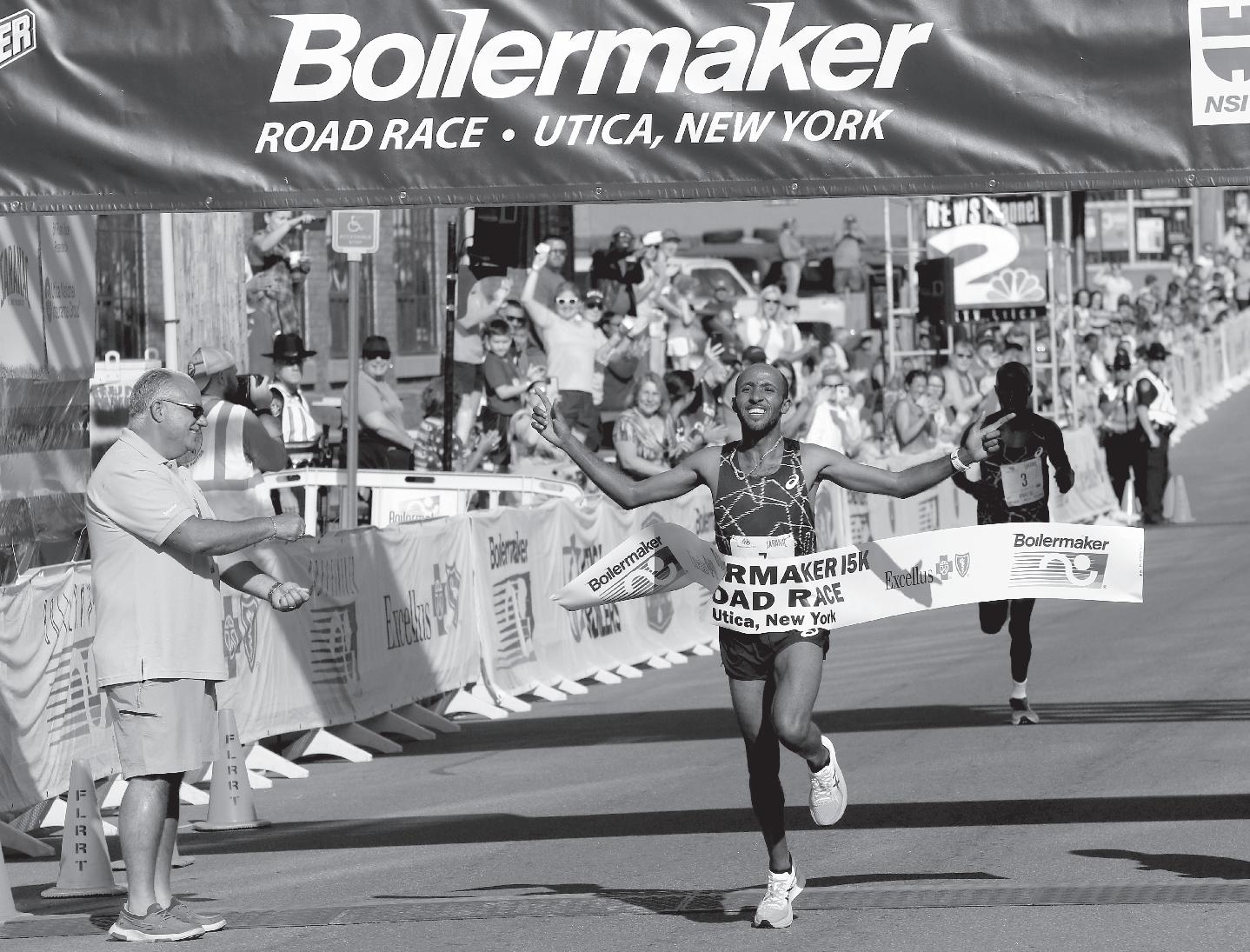
Utica native and former car mechanic Jim Stasaitis first heard of the Boilermaker Road Race from one of his customers at the car shop years ago. One of those customers happened to be Steve Mazza, one of the original organizers for the race.

Stasaitis said. “He said ‘we’re going to put this race on and we need some people to time it at every mile. Are you interested in it?’ I said, ‘yeah, why not.’ So, I was at the very first Boilermaker [in 1978] calling out times.”
Stasaitis showed up to the Boilermaker again in1983, but this time he actually ran the race instead of just watching it from the sidelines.
“I got away from it a little bit,” Stasaitis said. “But then when guys at work said they’re going to run the Boilermaker, I said ‘you know it’s 9.3 miles.’ You just don’t go out there and run, even though we were fairly young, but then I said ‘hey, maybe I could do this,’ and I did. I ran that first Boilermaker and I got hooked.”
Running became Stasaitis’ favorite hobby. He got more involved in it, running in this race annually and other races and marathons across the U.S.
“I started running because of the Boilermaker,” Stasaitis said. “I ran a whole bunch of [marathons]. I got more involved with running. It was just a time where I can be out there, whether I’m with a group of people or by myself, flush my mind of everything and just enjoy the scenery.”
Stasaitis competed in 25 Boilermakers. He also ran 16 other marathons, which include the Boston
Marathon, New York City Marathon and Honolulu Marathon.
He loves the Boilermaker much more than all the other races and marathons, he competed in.
“I think that once you experience the Boilermaker, you are jaded,” Stasaitis said. “At least I was. It’s the reason that I love this race. I compare all other races to the Boilermaker. There have been some that come close, but none that surpass.”
The local racer, unfortunately, had to hang up his running shoes and retired from racing in 2016. His health problems were the reason why he stopped running the Boilermaker and other marathons.
“As I got older, my knees started going,” Stasaitis said. “I had a heart attack in 2015 during a cardiac procedure. I recovered and ran the [Boilermaker] 5K Committee Run in 2016, but hung my running shoes up after that. I’m still active, walking at least three miles four to five days a week.”
Stasaitis no longer runs these Boilermaker races, but he still shows up and works them.
He worked his way up the Boilermaker ladder, starting off as a volunteer and eventually ending up as the Boilermaker race director in 2008.
He still works as race director today.
“I started volunteering for the Boilermaker,” Stasaitis said. “Then I was the course director for a bunch of years and then for the last 15 years I graduated up to being the race director.”
As race director, Stasaitis has to pay the race bills and do all the financial work. He oversees security and takes care of all the volunteers, working this race. He has to get highway permits. “Through all the years, the Boilermaker is a business,” Stasaitis said. “I take care of financials. The bills coming in and payments that have to go out. I look at all those. I don’t write any of the checks, but I check everything that’s coming in. I take care of the volunteers. I oversee the security meetings, starting eight months before the race. There’s a lot of permitting to do, too. We have to deal with the [Department of Transportation] 33A special permit to use the roads. So, there’s a lot of things going on year-round. It’s just a dayto-day running of the business and the logistical part of the Boilermaker.”
He also provides the best customer service to his runners, competing in this year or future Boilermakers. He answers their questions and helps them with other things.
“Our runners are our customers,” Stasaitis said. “People say ‘why are you answering emails at 5 in the morning?’ People have questions and I don’t want them waiting for an answer. I pride myself on saying ‘look you may not get the answer that you want from me, but you will definitely get an answer.’ So, I think customer service is huge.”
Stasaitis did make changes to the race course this year, putting a little detour near Champlin Avenue. Although setting up the course, year
after year is the easiest part of his job, as he does not have to make many changes to it.
“Because the race is so established, we’ve only had a few changes on the course over the years,” Stasaitis said. “This year we have a little detour because of construction down on Champlin Ave., but that’s the simple stuff. We don’t have to lay the course out every year. It stays the same.”
The first year, working as race director, was nerve-racking for Stasaitis. But, he got rid of his butterflies, got the job done and got used to his position.
“My first year as race director, I was probably as nervous as I ever been,” Stasaitis said. “This was my debut. I want to make sure everything goes right, but we have such a good committee. The volunteers and the committee make me look good.”
Stasaitis said he missed running the Boilermaker. But now he plays a much bigger role in this race, working as race director. It is a role and job that he loves every so dearly.
“Working with so many community leaders” Stasaitis said. “Working with the runners and volunteers. It’s just so enjoyable. Getting involved with the Boilermaker, as much as I did, it was, for me, a way to give back to the community and to the sport that I loved. My parents taught me to get back, volunteer, do the work and don’t be afraid. This has given me a chance to give back to the community and the sport.”
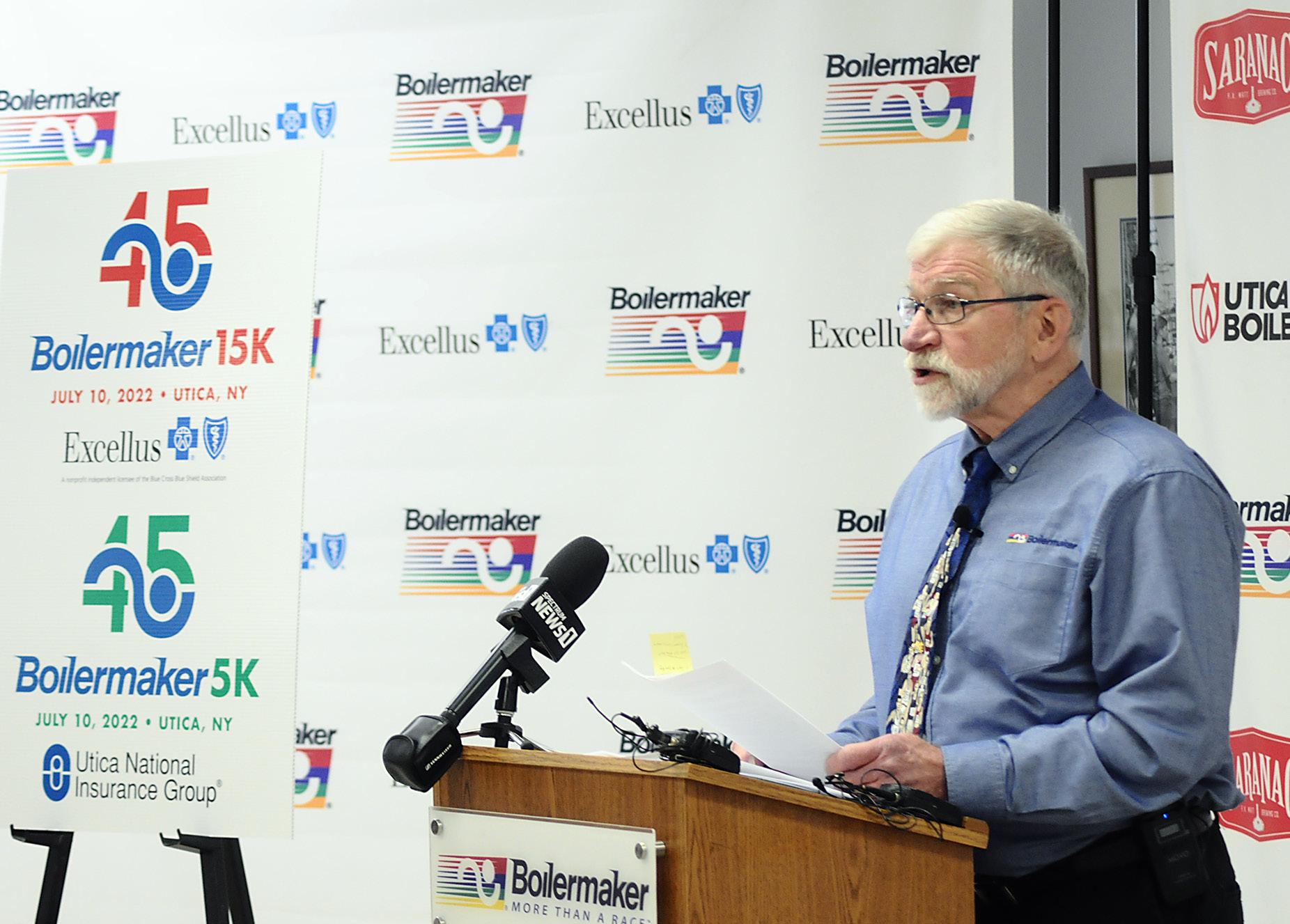
It’s not too later to arrange the medical and dental visits your kids will need over the summer break from school. With planning, you’ll be able to easily fit the wellchild visits, physicals, and dental exams into your summer schedule.
“Don’t wait too long to make your child’s summertime medical and dental appointments because your doctor may not have openings when you want them,” says Mark Brown, a family medicine physician
and medical director at Excellus BlueCross BlueShield. “Appointments can get scarce as we get into the summer, so secure pediatric medical and dental visits now.”
Children aged 2 to 21 years old should have an annual physical to make sure immunizations are up to date; growth and development are on track; hearing and vision are optimal for learning; and important topics are addressed such as eating and sleeping habits, social behaviors, and
A"peanut patch" worn on the skin may help protect toddlers who have potentially life-threatening peanut allergies, a new clinical trial shows.
The patch is a form of immunotherapy, which means it exposes peanut-allergic children to tiny bits of peanut protein over time — with the goal of training the immune system to better tolerate it.
In the trial, researchers found that of toddlers who wore the peanut patch every day for a year, two-thirds showed a significant reduction in their sensitivity to peanut protein: They were able to eat the equivalent of one to four peanuts without suffering an allergic reaction.
While that might sound like peanuts, experts said that level of tolerance is important.
The goal of immunotherapy is to prevent a severe reaction should a child accidentally ingest a small amount of peanut, said physici-
anAlkis Togias, of the U.S. National Institute of Allergy and Infectious Diseases.
"This is a positive study," said Togias, who wrote an editorial published with the findings on May 10 in the New England Journal of Medicine.
The patch tested in the trial, called Viaskin, is being developed by French biotech company DVB Technologies, which funded the research. It is not yet approved by the U.S. Food and Drug Administration.
If it does win approval, Togias said, "I think that would only be a good thing."
An estimated 2% of U.S. children are allergic to peanuts, and for most the allergy continues into adulthood. That makes it the most common food allergy among kids, and the thirdmost common among adults, according to the nonprofit Food Allergy Research and Education (FARE).

family dynamics.
For children with asthma, an annual physical provides an opportunity to review and update the child’s asthma action plan, and to make sure all adults who care for the child have a copy, including camp counselors, coaches, teachers, caregivers, and
even parents of their friends.
“Routine checkups not only offer preventive care, but also create strong, trusting relationships with providers that will benefit your child throughout their life,” says Brown.
Regular dental care is just as important as well-child visits and is recommended every six months.
“Preventive dental care is essential for good oral health, and also for general health,” says Brown. “Untreated oral disease has a large impact on quality of life and productivity, including for children.” Each year, U.S. children lose an average of 34 million school hours because of emergency dental care.

Brown advises parents to make the most of their children’s medical and dental visits by making a list of topics they’d like to address with their child’s health care provider. “Bring your top three to five questions or concerns with you to discuss at the start of the visit.”
School may not let out for the summer for several more weeks, but that doesn’t mean it is too early to start planning the most efficient way to use the break. Make your wellchild and pediatric dental appointments now.
The synthetic opioid fentanyl is killing increasing numbers of U.S. kids, emulating the chilling trends seen among adults, a new study finds.
Pediatric deaths from fentanyl increased more than 30-fold between 2013 and 2021, according to study author Julie Gaither, an assistant professor of pediatrics at the Yale School of Medicine.
Nearly half of the deaths occurred at home, and most were deemed unintentional. Teens may not have known the drugs they were using were contaminated with fentanyl, while very young children may have touched or swallowed drugs used by their parents.
"The problem is that more adults are exposed to fentanyl now, whether it's a pure form of the drug or it's being cut into other drugs, so kids are more likely to be exposed to it," Gaither explained.
Using death certifi cate data from the U.S. Centers for Disease Control and Pre vention, Gaither assessed deaths from fentanyl over two decades.
Almost 5,200 deaths among near ly 14,000 fatal opioid poisonings between 1999 and 2021 were due to fentan yl, Gaither found.
In 1999, about 5% of the deaths from opioids were from fentanyl; by 2021, that had jumped to 94%, mirroring the pat tern of adult fatalities.

Earlier in May, a CDC report
disclosed that fentanyl overdose deaths in the United States had soared 279% in just five years.
In Gaither's research, she found that a surge in fentanyl-related fatalities that began in 2018 led to a nearly threefold increase in deaths among older teens and a nearly sixfold increase among children younger than 5.
Deaths peaked in 2020 and 2021, Gaither said, suggesting the COVID-19 pandemic made the fentanyl crisis worse.
Nine in 10 of these deaths were among teens aged 15 to 19, and nearly 7% were among kids under 4.
In 2021 alone, fentanyl caused 40 infant deaths and 93 deaths among kids aged 1 to 4, according to Gaither's report.
"There is a general consensus that the overdose deaths involving fentanyl among kids, whether young kids or teens, are primarily unintentional," said Linda Richter, senior vice president at the Partnership to End
"Among younger children, access to pills or substances laced with fentanyl that are left within their reach is the main culprit," said Richter, who was not part of the new research.
"For older adolescents, the culprit is more likely a lack of awareness that the pill they are intentionally taking contains
As any parent knows, your idea of a good time and your kid’s idea of a good time match like the pile of socks at the bottom of the laundry basket.
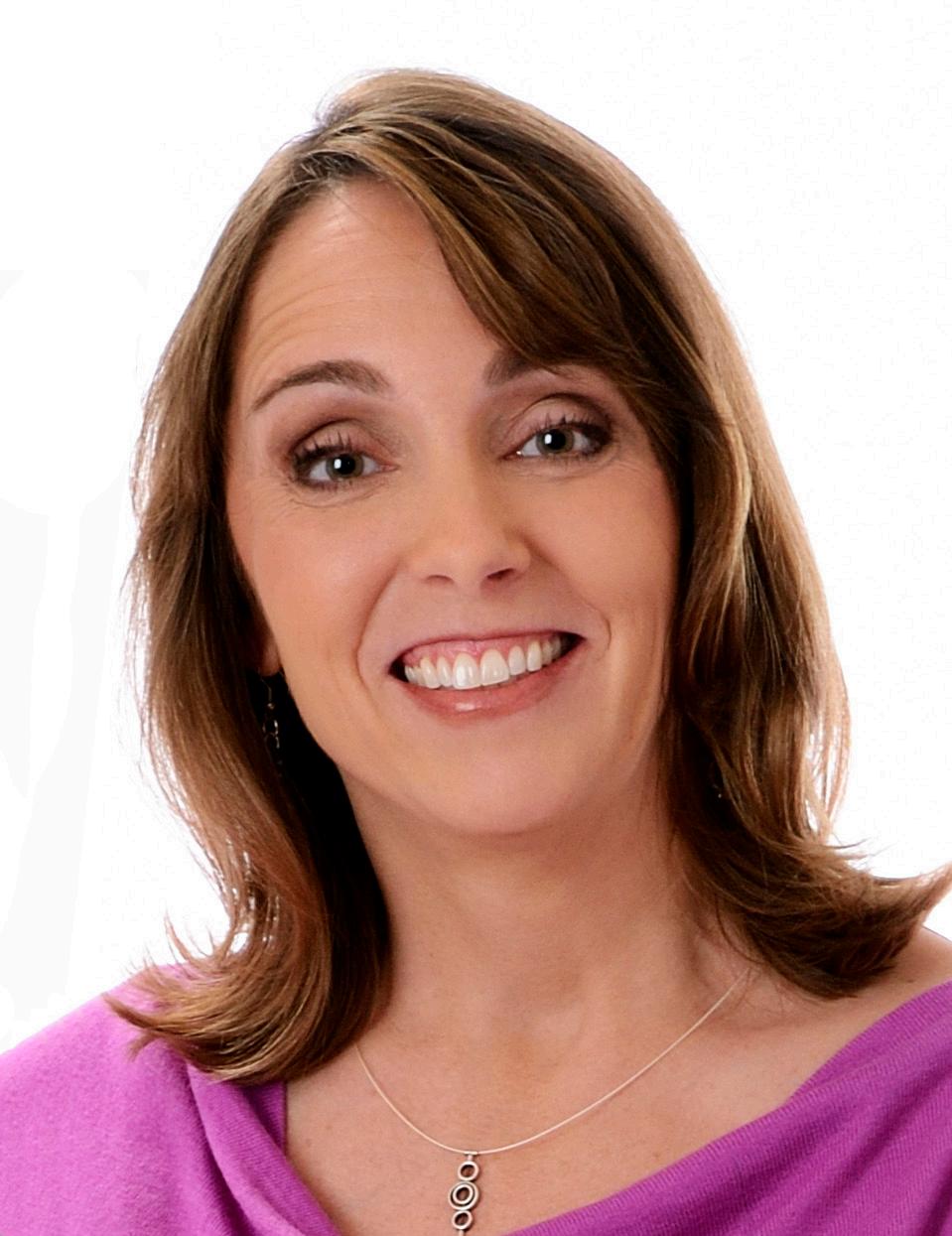
So, if you’re a parent who seeks entertainment ideas that will make at least 67% of your family happy, look no further. This list of activities that might just beat the odds and get a smile out of almost everyone in your family.
Most of these activities can be also customized for children of any age. So give them a shot. You only have boredom and bickering to lose.
There is something magical about staring into the night sky. When the time is right to stargaze, do some research about what constellations are visible. Then see if anyone in the family can connect the orbs in the sky to make a picture. You can also research the story of each constellation.

Take your kids on the putt-putt tour this season. Map out a few different places to play mini golf. Then create friendly competitions. See who has the most holes-in-one at the end of the tour. See who had the lowest combined score. See who won the most individual matches. See who landed in the water hazards the most. Make it silly.
Camping is a lot of fun, but it’s also a lot of work to travel far away from home. If there are campsites close to your home, rent one for a night or two. Then you don’t have to travel far to enjoy the outdoors. You


also have a short trip home if it rains. And, if you forget something, your house is guaranteed to have more supplies than the park’s camp store.
4.Go to a park and tell your kids they’re teachers
Upstate New York is home to many state, county and private parks. Many of these parks have informational signs throughout them. Take your kids to one of these parks and have your kids teach you the information on the signs. Even if your child can’t read yet, they can use the pictures to design a story. The role reversal will make it fun.
Let each member of your family plan a barbecue. They have to set the menu and help prepare the meal. They can pick their favorite barbecue foods. Sure, one of your barbecues might be just cheese puffs, baked beans, and buttered rolls, but everyone will enjoy the autonomy.
Add some extra adventure to an everyday hike by going somewhere that is new to everyone in the family. Then you can work together to analyze the trail map and plan out the hike. A new hike will encourage collaboration. Just don’t get lost.
A movie night may sound cliched, but if you spruce it up, you just might get instant buy-in. Plan out a series of movie nights. Each night, each member of your family gets a different responsibility. One person can pick the genre. Another person can pick the movie. Another one can pick a candy. Another one can pick
a salty snack. Shake things up and settle in.
8.Find the best ice cream parlor within 20 miles of your house Research all the ice cream places that you can reasonably get to over the next few months. Keep a record of which places had things like the best ice cream, the best toppings, the biggest sizes, the funniest sundae name or the softest napkins. The whole family will enjoy being a judge in this delicious competition.

9.Chalk for a better world
Make it your mission to find new and creative places to leave chalk art. You could chalk the end of a neighbor’s driveway with a beautiful picture or kind message. You could go to a public park and leave words of encouragement for strangers. You could go to a family member’s house and draw them a mural to brighten their world for days to come. Chalk is an easy way to spread joy.
10. Have a “say yes” day

Set a monetary budget and some gentle boundaries and let the family embark on a “say yes” day. What is a “say yes” day? It’s as easy as it sounds; someone volunteers an idea and you have to say yes. Remind your kids to be reasonable, and then let them live out their simple and realistic dreams. Ice cream for breakfast? Yes. Family video game tournament? Yes. Swimming in a lake? Yes. Three playgrounds in one day? Yes. Let your imagination run you right into happiness.
There’s just something about spring: Seeing green return to the landscape and watching new life unfold always makes one feel rejuvenated.
“Research supports what many already feel — spending time in nature does the mind and body good,” says Amanda Shanahan, a registered dietitian nutritionist and manager of employee well-being at Excellus BlueCross BlueShield. She notes the following potential benefits:
• Protect your bones. Sunlight hitting the skin eventually leads to the creation of vitamin D in your body. It’s good protection against osteoporosis and other diseases. Just 10 to 15 minutes of sunlight on your bare arms and legs a few times a week is all you need. If you’re going to be out longer, put on the sunscreen!
• Recharge the brain. The demands of everyday life often overtax
our brain and body. Time with nature is like a recharging station, allowing us to better cope with life’s stresses. Our brains don’t have to work the same way to pay attention to nature, which allows time for restoration. The possible benefits of spending time outside are a more upbeat mood, increased creativity, improved concentration and reduced stress.
• Age gracefully. Older people who get outside every day stay healthier and function better, longer. Studies have shown those who have contact with nature have fewer complaints of aches and pains, sleep issues, or other health-related problems. And, group-oriented activities or hobbies have social health benefits. Tennis, anyone?! If that’s too rigorous, take a walk with a friend.
• Move more. Americans spend 90% of their time indoors; there’s no question that most of us, including children, lead a sedentary lifestyle.
You don’t need to be outdoors to be active; many people enjoy exercising indoors while they watch TV. But spending time outside means less time sitting in front of the flat screen and more time engaged in movement such as gardening, cleaning up the yard or running around with the kids or the dog.
“With winter being so long and cold and gray here in Upstate New York, everyone should make the most of nature’s gift of spring by getting outdoors as soon as they can,” said Shanahan. “Just leave your cell phone and earbuds in the house so you can fully enjoy the green grass, colorful buds, early blooming flowers and chirping birds.”
What will you do this spring to connect with nature? Whatever it is, it will do your brain and body good.
Submitted by Excellus BlueCross BlueShield.
There are an unlimited number of outdoor activities and exercises people can do or try during the summer. But which ones are the best from a health standpoint?
Here are six summer outdoor activities and exercises that could definitely improve one’s health and are worth trying.

Walking is the easiest exercise and obvious choice on this list. But there are some interesting health-relat- ed facts people may not know about this activity.
Did you know that walking helps tame your sweet tooth?
A study, by the University of Exeter, found that a 15-minute walk can reduce your craving for chocolate and other sugary snacks.
Do women know that walking, for a few hours, reduces their risk of getting breast cancer? According to the American Cancer Society, women, who walk seven or more hours a week, have a 14% lower risk of getting breast cancer as opposed to those who walk three hours or fewer during the week. The longer women walk, the lower their risk drops.
It is always good to walk, whether it’s on the streets, in the woods, or on a trail. If anyone does not like walking on the streets near oncoming traffic, then there are many walking trails alongside the Erie Canal and in the Mohawk Valley.


Cycling is good for your heart and lungs, reducing your risk of getting cardiovascular diseases, according to Betterhealth.gov. Cycling also improves joint mobility and strengthens bones, according to Bikeradar.com. Melissa Britt, nurse practitioner for iHealth in Utica, said that cycling is good for your back and knees, putting less pressure on them while pedaling.
“Sometimes walking would put too much pressure on someone’s
back and knees,” Britt said. “So biking would be better for backs and knees.”
It even increases your brain power, makes you smarter and helps you live longer, according Bikeradar.com.
“I would say it’s true,” said Stephen Nahumck, owner of Dick Sonne’s Cycling, Fitness, and Ski Store in New Hartford. “Cycling makes you feel like a little kid again. It gets you excited. It gets you outside. It makes you healthier. It never seems to be a bad day when you’re on a bike. The smarter aspect, I would say, is making your brain power work a little more because you have to do multiple things at once. You have to be looking where you’re going. You’ve got to be using your brakes. It kind of keeps you guessing at the same time.”
3. Hiking
Britt said hiking is better, health-wise, than walking because you are going up and down terrains as opposed to walking on a flat trail or street.
“It’s better overall because you are going up and down different terrains,” Britt said. “So it would be more beneficial for your legs and heart. Anytime you increase the blood supply in the legs, the heart gets better.”
There are hiking trails at Hamilton College, in Clinton, and Proctor Park, in Utica.

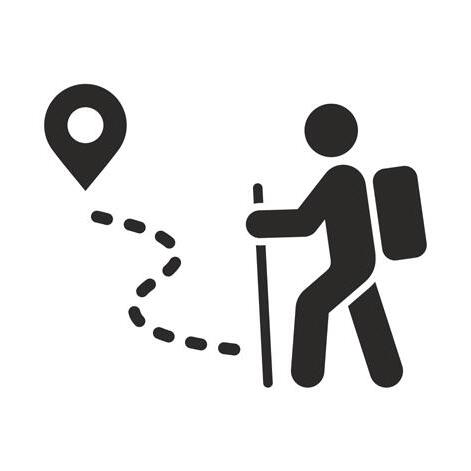
Baseball and softball players are using their whole bodies while playing this sport. They’re throwing the baseball, swinging the bats, running the bases and bending to catch the ball or put the runner out on base. They are building muscles in their arms, legs, upper and lower portion of their bodies. Baseball and softball players are getting a full-body workout while playing this sport.
[Baseball is] good for really the
whole body,” Britt said. “You’re using your arms and legs. You’re running, which is good for cardio. There’s muscle building in the arms and legs.”
Players are also getting a great mental workout, while playing seven, nine or more innings.
“Baseball and softball are mental-type games too,” said Jeff Knittel, general manager of Accelerate Sports Complex in Whitesboro. “There are so many strategic and tactical areas within the game that you’re going to be doing. Knowing certain situations throughout the game, like if somebody is on first base, what are you going to do with the ball, or if you’re hitting, what are you doing. What’s my certain role at this point with one or two outs. Balls and strikes. So, I think that helps as well, not just physically, but mentally.”

This sport even improves players’ social skills, as they are talking and hanging out with their teammates before the game, in the dugout, in between innings, and/or during the actual game.
“You’re working together as a team,” Knittel said. “That helps tremendously as far as communication and socially working with other people. Plus most teammates end up being friends outside of it as well, so it does help you tremendously on the social aspect of it.”
Jim Nichols, president of the Syracuse Volleyball Club in Liverpool, said that beach volleyball is a lifetime sport.
You can play this sport at any age, whether you’re 9 or 70. You can play with your family, friends and opposite sexes.
Beach volleyball can be hard for those who want to learn and be good at it, according to Beachvolleywarriors.com. But it can also be fun.
“Anytime it’s easy and fun, people enjoy playing that sport,” Nichols said. “Anytime you’re in a social setting, while playing, it’s more relaxing for you.”
Beach volleyball takes less of a toll on your body. You rarely suffer any pain or injuries while playing this sport.
“Sand (beach) volleyball is probably the easiest on your body than any other sport,” Nichols said, “because it’s a soft-landing spot. You’re not on a hard court. The impact on your joints is very light.”
6. Swimming
Swimming is another full-body exercise.
You can learn it at any age and you don’t have to be fit to learn how to swim.
“There is no age limit to learning how to swim,” said Alice Laughlin, owner and head swimming coach for Total Immersion Swimming in New Paltz. “You can learn skills up in your 70s. You don’t have to be tremendously fit in order to swim and it’s very gentle on the joints because you’re not bearing your own weight. So that is an attractive point for people that are overweight. That’s very attractive for adults that never learned before. You can be any age, any gender and any height or weight. Swimming is very forgiving on the body.”
Swimming improves breathing and lowers your heart rate, according to Drskedros.com.

This activity strengthens your core muscles, as your body moves you through the water.
“The core body is the engine, where the power is to move forward,” Laughlin said. “Swimming is not arms and legs moving. The core body moves and then the arms follow. It is the big muscles in your glutes and quads. They’re holding you up in the world. The legs are the stabilizers and the arms are the applicators.”
Those who swim with a good posture can relieve the pain and tension in their back and neck.
“One can eliminate neck pain and back pain by doing two things while swimming freestyle,” Laughlin said. “Point one; you look down at the bottom of the pool. You let your head rest on the water as if you are snorkeling. You do not look forward. Point two; you don’t swing your arms high in the air. They should always be entering the water at a 45-degree angle. It’s an immense relief on the back.”

My husband and I now get most of our protein from plant-based foods: legumes, quinoa, chia seeds, tofu and dairy products.
While we are long past any growth spurts, we still need protein to preserve muscle mass, maintain balance, manage weight and recover from injuries.
Compared to getting protein from meat, however, it’s not always easy to get our daily allotment of protein from plants.
But a food product we recently discovered has facilitated that effort: plant-based pasta.
Most plant-based pastas have considerably more protein than your average refined-wheat pasta. Plus, their pronounced flavor satisfies us more than regular pasta.
Read on for more good reasons to eat plant-based pasta. And why “more protein” is just the tip of this nutrition-packed iceberg.
• Loaded with fiber. Most plantbased pastas have over twice the fiber of regular pasta. Fiber is a boon to health because it stabilizes blood sugar levels, promotes regularity and ferries bad cholesterol out. Many studies suggest that increasing fiber reduces our susceptibility to heart disease, cancer, stroke and diabetes.

• Fewer and healthier carbs. Not only do plant-based pastas have
fewer carbs, but the carbs they do have are the “good” ones—the complex ones. Because these carbs have more fiber than simple carbs, you’ll feel fuller longer and be less likely to overeat. Moreover, their slower digestion provides a steady stream of energy and minimizes spikes in blood sugar.
• Good for the planet. Eating more plant-based proteins can also help protect the environment.
Livestock accounts for around 14.5% of the world’s greenhouse gases each year, which is roughly the same amount as the emissions from all the cars, trucks, planes, and ships combined in the world today. Holy cow! Greenhouse gases, as you may know, contribute to global warming and climate change.
Anne Palumbo is a lifestyle columnist, food guru, and seasoned cook, who has perfected the art of preparing nutritious, calorie-conscious dishes. She is hungry for your questions and comments about SmartBites, so be in touch with Anne at avpalumbo@aol.com.

YOUR SUPPORT
Read nutrition labels carefully. While most types of plant-based pasta are similar in terms of calories and overall nutrition, they can vary greatly in protein and fiber content. Also, plant-based pasta shouldn’t take the place of whole vegetables in your diet, as the nutritional content of pasta pales in comparison to actual vegetables. Consider adding vegetables to your pasta dishes to boost nutrients.

Serves 4-6
For the dressing:
1 garlic clove, minced
½ cup fat-reduced mayonnaise
1/3 cup light sour cream
½ cup fresh parsley
½ cup fresh basil

2 tablespoons chopped chives
2 tablespoons fresh lemon juice
1 tablespoon olive oil
½ teaspoon salt; ¼ teaspoon coarse black pepper
For the salad:
8 oz plant-based pasta (I used red lentil for high protein and fiber)
1 cup cherry tomatoes, halved
2 medium carrots, chopped
1 cup shelled edamame, cooked Parmesan cheese, shredded
Boil the pasta in a large pot of salted water, according to the package’s “al denté” instructions. Once pasta is finished cooking, rinse under cool water and drain well.
While pasta is cooking, make the dressing. Combine all the ingredients in a food processor or blender and purée until smooth.
Transfer cooled pasta to a large serving bowl. Add the cherry tomatoes, carrots, edamame, and dressing, tossing well to combine. To serve, top with grated Parmesan.
Kanfoush Wellness, LLC
Make the decision to FEEL BETTER: Body, Mind & Spirit!
the decision to FEEL BETTER: Body,
50%Off1stSessionwith
Mind &
FEEL BETTER: Body, Mind & Spirit!
One-on-One, Small Group & Corporate:
• Yoga Therapy, Meditation & Mindfulness
BODY
One-on-One, Small Group & Corporate:
• Yoga Therapy, Meditation & Mindfulness
• Somatic Movement & Pain Self-Management
Yoga Therapy, Meditation & Mindfulness
• Personal Training & Wellness Coaching
• Somatic Movement & Pain Self-Management
Somatic Movement & Pain Self-Management
• Chair Yoga & Chair Fitness
• Personal Training & Wellness Coaching
Personal Training & Wellness Coaching
• Rehabilitative Qigong
In-person or virtual!
• Chair Yoga & Chair Fitness
Chair Yoga & Chair Fitness
Rehabilitative Qigong
• Rehabilitative Qigong
In-person or virtual!
Sharon Kanfoush, PhD, C-IAYT, CEI3, ERYT500, ISSA-CPT 2709 Genesee Street, Utica NY 13501 (315) 982-7144
sharonkanfoushwellness@gmail.com
Sharon Kanfoush, PhD, C-IAYT, CEI3, ERYT500, ISSA-CPT 2709 Genesee Street, Utica NY 13501 (315) 982-7144
sharonkanfoushwellness.org
skanfou.gumroad.com FREE Consultation!
RESILIENCE MIND - BODY 50%Off1stSessionwith Code:TRYITOUT! FREE Consultation! In-person or virtual! It’s

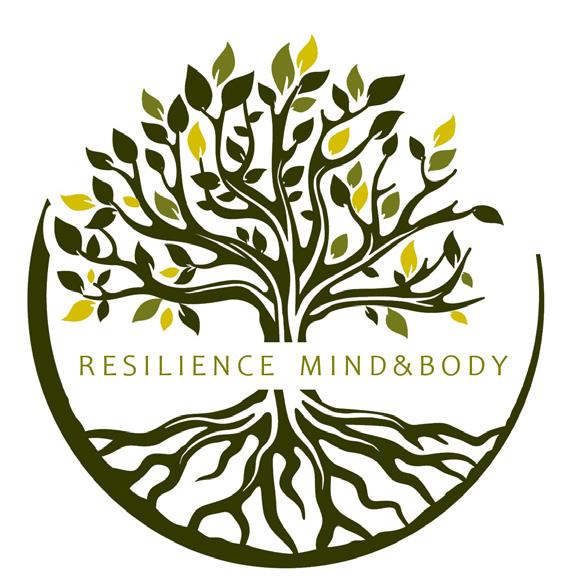
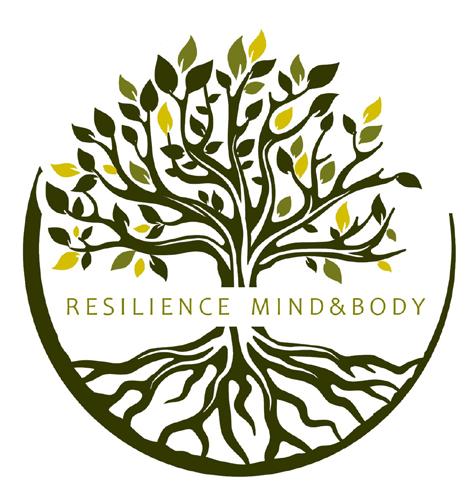
sharonkanfoushwellness@gmail.com
sharonkanfoushwellness.org
Most of us have a voice that runs through our head. It’s sort of a conversation with ourselves in our mind. It serves many purposes — gives us advice, helps us remember things, encourages us (or discourages us) in tough times, helps us think through difficult situations.
Sometimes it sounds like the advice our grandma gave us or a criticism from a harsh parent.
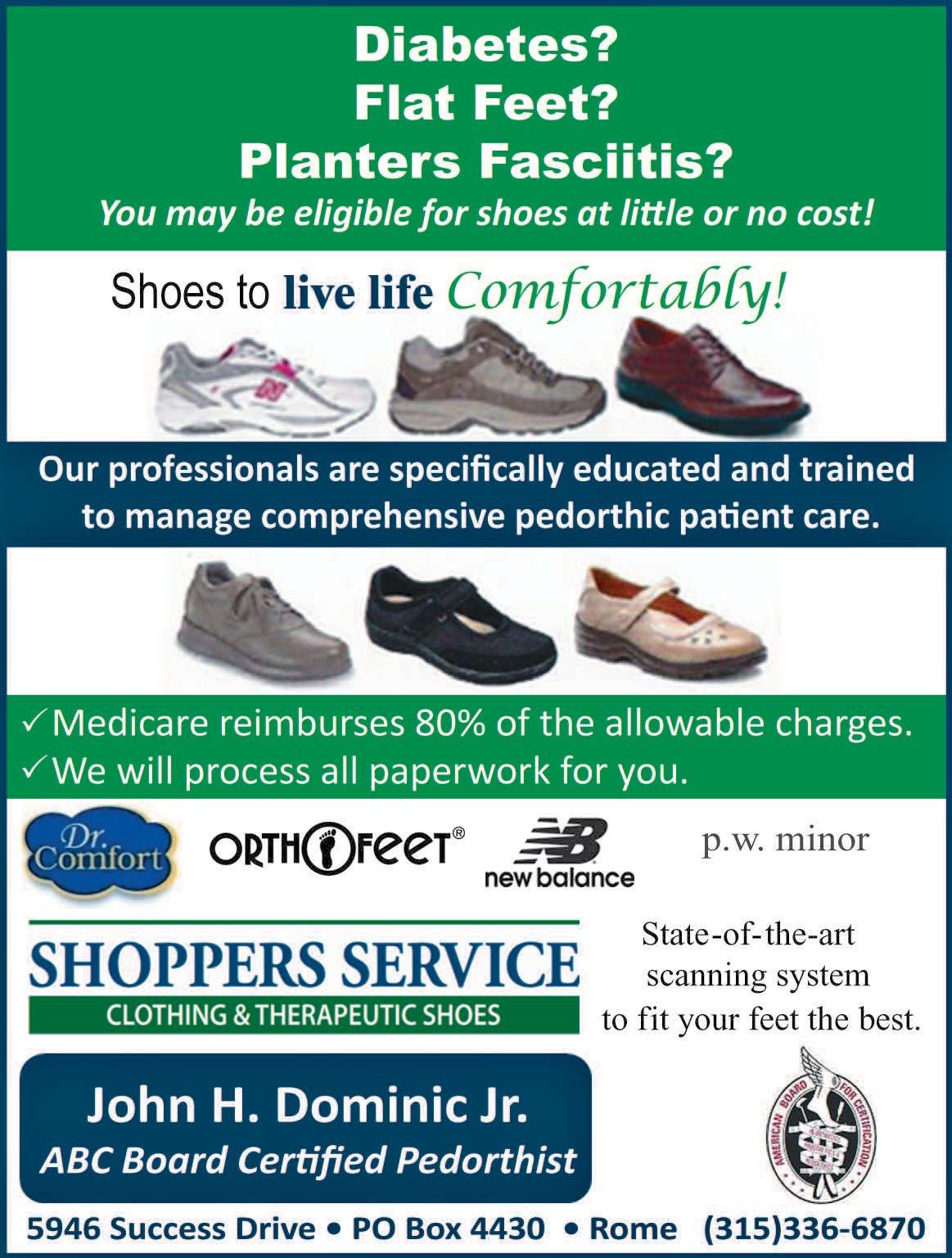



It can be our greatest supporter or our worst critic. It might say “You can get through this! You’ve gotten through a lot tougher things!” Or, it might say “You’re an idiot! You’ll never get this job — don’t even bother to apply.”
The thing is, for some of us, that inner voice tends to be more critical and negative than positive. It causes more harm than good. It feeds off of our insecurities and anxieties.
Or maybe it’s that we’re wired to notice the negative stuff more. The negative stuff may mess with our self-confidence, can cause us to become anxious or depressed, contributes to dementia, even ruins relationships.
Since everyone’s brain is different, there are a small group of people who don’t have this inner voice. Maybe they’re the lucky ones; they don’t hear those negative thoughts or the self-depreciating criticisms.
An inner voice that’s mostly negative can make us feel hopeless and helpless, because we can’t control the demoralizing thoughts brewing in our brains. However, there are things you can do about it. I like to think I do these things so that I can create an inner dialogue that’s mostly positive and encouraging.

First, become aware of your self-criticism. Acknowledge that it’s there. Maybe it even sounds like those harsh, critical people in your past — those comments that you never forget. Like for me, it’s my father saying in a cynical tone of voice: “You think you’re so smart, huh?” Or my mother saying “Why were you second in your class? You should’ve been first!” My father scared by a daughter smarter than him; my mother expecting her daughter to be even smarter.

Then, choose not to give those voices any credit. Drop them from your thoughts. Or, better yet, remember the facts. When I was leaving for college, my father said “No one will ever want to marry you!” He was upset that I was leaving him to make my own life and said the most hurtful things he could think of. Of course, he wasn’t right.
Those voices from the past do stay with us. At the time, they made an impression on us because we were young children who couldn’t tell the difference between accurate statements and statements that were driven by the immaturity of the adults in our life.
When you catch yourself tearing yourself down with criticism, find the facts of the matter so that you can see the truth. For example, if you say to yourself, “That was sure a dumb thing I did,” acknowledge it and drop it. Maybe that wasn’t the most intelligent thing you’ve ever done, but you did do a lot of other things that worked out right for you.
Talk to yourself like you would a good friend. If your friend was saying the things you’re saying to yourself, how would you respond?
I remember once when I said to a friend: “I just can’t do all these things I have to do!” she said “Yes, you can! You’ve done all kinds of hard things before and you’ve done them just fine. You can do this!”
Think about how you’ll feel down the road: tomorrow, next week, next year. Will this matter at all six months from now?

Reframe your situation as a challenge not a threat. Reinterpret your situation not as a threat, but as a challenge you can handle.
Change the image in your head: Most of us think in images in our head, in addition to voices. And those images can have a lot of power. You can’t change what happened to you, but you can change the image if it keeps playing in your head. For example, the image of her stepfather coming into her bedroom kept playing in Kathy’s head. Every time that hateful image came into her head, she changed it. She made him into a tiny, Jiminy Cricket size and hit him; he finally disappeared for good.
Your negative inner voice can
be very convincing, especially if it’s been around for a long time. However, you can quiet this voice or even channel it to create a useful inner dialogue. The key is to find what works for you.
A positive shift of your inner voice is a game changer. It’s like dropping the weight of a bag of garbage that you’ve been lugging around, holding onto because you’ve never questioned it. Maybe it’s even beginning to smell. It’s time to drop it.
Barbara Pierce is a retired licensed clinical social worker with many years of experience helping people. If you would like to purchase a copy of her book, “When You Come to the Edge: Aging” or if you have questions for her, contact her at barbarapierce06@yahoo.com.

One of the best things about winter in the Mohawk Valley is the absence of mosquitoes — none of those pesky little biting nuisances with their high-pitched whine. Swat one and 10 more will land on you, plumping up with your blood.
Yes, mosquitoes are a big nuisance for us during the summer. There are two good reasons to control them: to avoid their bites and to prevent the spread of diseases they carry.
Most of our mosquitoes don’t carry disease-causing viruses. Fortunately, only a few of the mosquito species in our area do carry diseases. Diseases like the West Nile virus which has been found in every county in New York state,zika virus which has been found in areas around New York City and eastern equine encephalitis virus, found mostly in the mosquitoes that live in the swampy areas of north central New York.
You may have noticed that mosquitoes don’t attack us all equally. Some people are ‘mosquito magnets’ while others get off bite-free. This has puzzled scientists for some time. Now research suggests that certain body odors are the deciding factor, as reported in the October 2022 issue of
the journal Cell.
Each of us has a unique skin odor, a blend of different chemical compounds. Mosquitoes are especially attracted to people with higher levels of compounds called carboxylic acids on their skin. If you have high levels of this chemical on your skin, you’ll be the one getting all the bites.
To determine what we can do to reduce the mosquitoes around our homes, we contacted the departments of health at both Oneida County and Herkimer County to see what help they offer. Neither county offers any mosquito abatement measures; it’s up to each individual to hire a mosquito control professional.

We asked customer service representative Katrina Miller of Mosquito Victory Mosquito and Tick Control serving Rome and Utica for tips on how to eliminate mosquitoes around our homes and property.
“First, remember that mosquitoes need water to breed,” she said.
“It takes only a very small amount of water to attract a female mosquito to decide this is a place for her to lay her eggs. Even a soda cap of water can create thousands of mosquitoes.”
Mosquitoes can develop in any standing water that has been stand-
ing for more than four days.
To reduce the mosquito population around your home and property, reduce or eliminate all standing water and debris. Dispose of anything that holds water. Dispose of used tires, which are a significant mosquito-breeding site. Drill holes in the bottoms of recycling containers that you keep outdoors. Make sure roof gutters drain properly, and clean clogged gutters in the spring and fall. Turn over plastic wading pools and wheelbarrows when you’re not using them. Remove leaf litter from yards and gardens.
“Mosquitoes love the undersides of things like leaves,” said Miller. “That’s their favorite place.”


Clean vegetation and debris from the edges of ponds. Clean and chlorinate swimming pools, outdoor saunas, hot tubs and other water features such as fountains, birdbaths and garden ponds. If your pool is small, drain it. If it’s large, cover it and drain water from the cover.
Even the shallow ruts carved into the grass by a lawnmower or heavy vehicle can become a breeding ground for mosquitoes.
Heavily wooded areas have a lot of mosquitoes, as do areas with tall grasses.
To keep your home mosquito-free, make sure all your windows and doors have screens and that the screens do not have rips, tears or holes.
Also, “The way you dress is important,” added Miller. “Mosquitoes aren’t attracted to light colored clothes as much. Cover your skin as much as possible. Stay inside at sunrise, sunset and early in the evening when some mosquito breeds are most active.”
“The best method for getting rid of mosquitoes is to let us treat them,” she said. “We’ll come out every 21 days, as this corresponds with the life cycle of the mosquito; we stay ahead of their breeding cycles. We’ll get you on a schedule and treat your yard regularly throughout mosquito season, which runs from mid-April to late September - early October. We’ll spray for mosquitoes, ticks and fleas with a pesticide that’s safe for pets and children. You should see an immediate reduction in the mosquito population within 24 hours of your first treatment.”
“People sometimes ask about just doing one treatment,” she added. “However, if you just do one treatment, there’s no guarantee that it will get rid of the problem because the protection degrades in time.”
Frank chose non-surgical CyberKnife® at HOA –offering 5 treatments instead of 35!
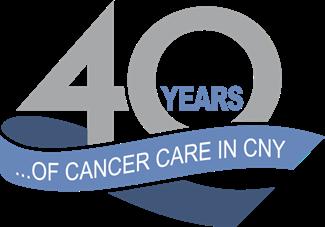
“The original diagnosis was to treat my prostate cancer with seven weeks of radiation, five days a week. I was kind of upset that I was never given the option of CyberKnife,” said Frank. “The precise radiation achieved by CyberKnife, far fewer treatments, and the personalized care I received from Dr. Chin and his team made my decision an easy one. Better, the treatment was a real success!”

Sleeping difficulties are experienced by many people in this fast-paced modern era. Sleep disorders consist of a variety of symptoms and in order to properly determine the cause of sleep issues, a food and lifestyle journal may be a helpful tool. Included in your journal is your food and drink intake including time of day and any symptoms following ingestion. Also include exercise, daytime and evening activities, your environment, medications and sleep preparedness. The foods and drinks you consume may affect your sleep. Try to keep breakfast and
By Deborah Dittnernightcap for a calming effect. But this actually reduces the quality and length of sleep increasing disturbances. Sugar and smoking can also create sleep issues.
lunch at consistent times including a source of protein especially at breakfast which may increase the feeling of wakefulness. The evening meal should be a minimum of two to three hours before bedtime. Eating an especially heavy meal at dinner needs time to digest. A whole nutrient dense food plan consisting of dark green leafy vegetables will help to promote improved sleep. Other food options to promote sleep are almonds (rich in magnesium), bananas and oatmeal (rich in magnesium and potassium), pumpkin seeds with a small apple and tart cherry juice.
Water is the best for fluid intake. But if you find yourself getting up multiple times during the night to use the bathroom, consider stopping fluids two to three hours ahead as well. Caffeine intake may also cause sleep troubles. A cup in the morning should be fine but consider stopping caffeinated beverages by noon or 3 p.m. at the latest. Many enjoy an alcoholic
Sleeping: you’ve done it since you were a baby and it may seem like the easiest thing to do.
Until it isn’t.
That’s where a sleep specialist can help patients regain restful slumber.
Sleep specialists can include medical doctors who have training in physiology, pathology of the neurological system and sleep.
Or they could be like Heather Henderson, a doctor of nurse practitioner in private practice in Syracuse, who specializes in anxiety disorders, depressive and mood disorders, lifestyle changes and stress management, women’s issues and insomnia and sleep disorders.
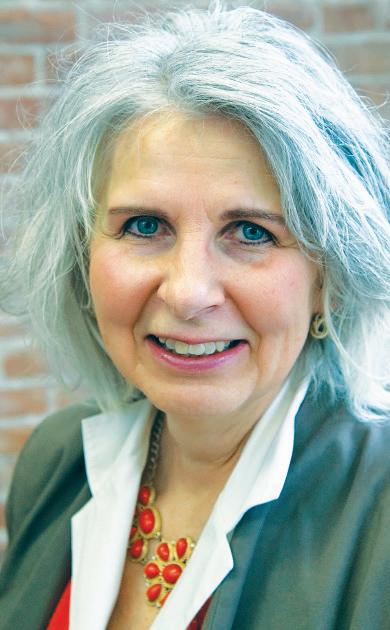
Including sleep disorders among her specialties makes sense. Each of these challenges — anxiety, mood disorders, stress — can contribute to sleep disruption, and poor sleep can also contribute to these other areas.
“I enjoy helping people improve their sleep because sleep is vital to
optimal physical and mental health,” Henderson said.
Most adults need seven to nine hours of sleep per 24-hour period, according to the Centers for Disease Control and Prevention, to perform at their optimal mental and physical level.
In addition to the above healthcare professionals, sleep specialists could be “sleep coaches” whose training may be much less medical in nature and tends to focus more on the sleep habits and environment than medical and mental health problems that affect sleep. Medical schools don’t offer a sleep major. However, as a sub-specialty, caregivers in many areas of medicine take additional concentrations in sleep to offer greater assistance to patients struggling with sleeping well.
Typically, sleep specialist is a sub-specialty of specialties such as neurologist, otolaryngologist or pulmonologist. Specialists may work in a variety of settings, including as
A consistent wake and sleep schedule including weekends encourages your natural melatonin, a hormone telling you it’s time for sleep. Getting into this rhythm allows for restful sleep. Your bedroom atmosphere should consist of a good quality mattress and a firm pillow, darkening shades or curtains and an average room temperature of 65-70 F. Remove the use of all electronics (TV, iPad, iPhone) for a minimum of one to two hours from the bedroom as these only stimulate the body and mind. Enjoy reading a book under lower light. Your bedtime routine may consist of a warm bath with Epsom salt and lavender essential oil, a cup of calming chamomile tea or listening to soothing music or a sound machine with the ocean waves or rain falling.
Daytime exercise routines especially in the morning increase serotonin which aids in being alert and awake also allowing for improved sleep later on. If you have to work out later in the day, aim for at least three - four hours before bedtime. This timing is needed to decrease your body’s core temperature in preparation for sleep. Find a form of exercise that you enjoy whether it be walking, running, yoga, HIIT, or kick-boxing. The right exercise for you is to be consistent and enjoyed for it to be beneficial. Yoga before bed may consist of legs up the wall, child’s pose or corpse pose all creating relaxation.
Daily stress may also play a role
in sleep concerns. Stress management may consist of evening writing in a gratitude journaling, meditation and breathing techniques including 4-7-8, box breathing and pranayama breathing may calm the mind. Therapeutic grade essential oils such as lavender or chamomile are well known to relax the body and promote sleep. Herbal remedies may also be a consideration to improve sleep, but remember to consult your healthcare provider and/or herbalist. You are an individual requiring individual needs which includes the herbs chosen. Not all herbs are created equal, proper dosage and timing, and pre-existing medical conditions may come into play. Some herbs that may be considered are chamomile, valerian, skullcap, lavender, passionflower, ashwagandha or California poppy.
If you still find that sleep is difficult to come by, consult with your healthcare provider as there may be underlying conditions causing your specific situation. A restful night of sleep allows you and your body to be prepared for the next day and all the wonders it has to offer.
Deborah Dittner is a family nurse practitioner and health consultant. Her mission is to transform as many individuals as possible through nutrition and lifestyle changes. www. debdittner.comsleep coach or educator.
Technicians likely work in a sleep lab of a hospital or outpatient setting as part of a team of providers. Sleep medicine physicians may teach or head sleep medicine departments. A sleep specialty may also augment a care provider’s other training, such as with Henderson.
“I enjoy providing others with tools to work on sleep hygiene because doing so can also help improve so many other conditions that I see, such as depression and anxiety, and can greatly improve quality of life,” Henderson said.
Figuring out what’s disrupting their sleep and helping them resolve it can offer patients a better chance at a baseline of good health. That facilitates working on the other issues they’re experiencing, whether involving mental health, hormonal fluctua-
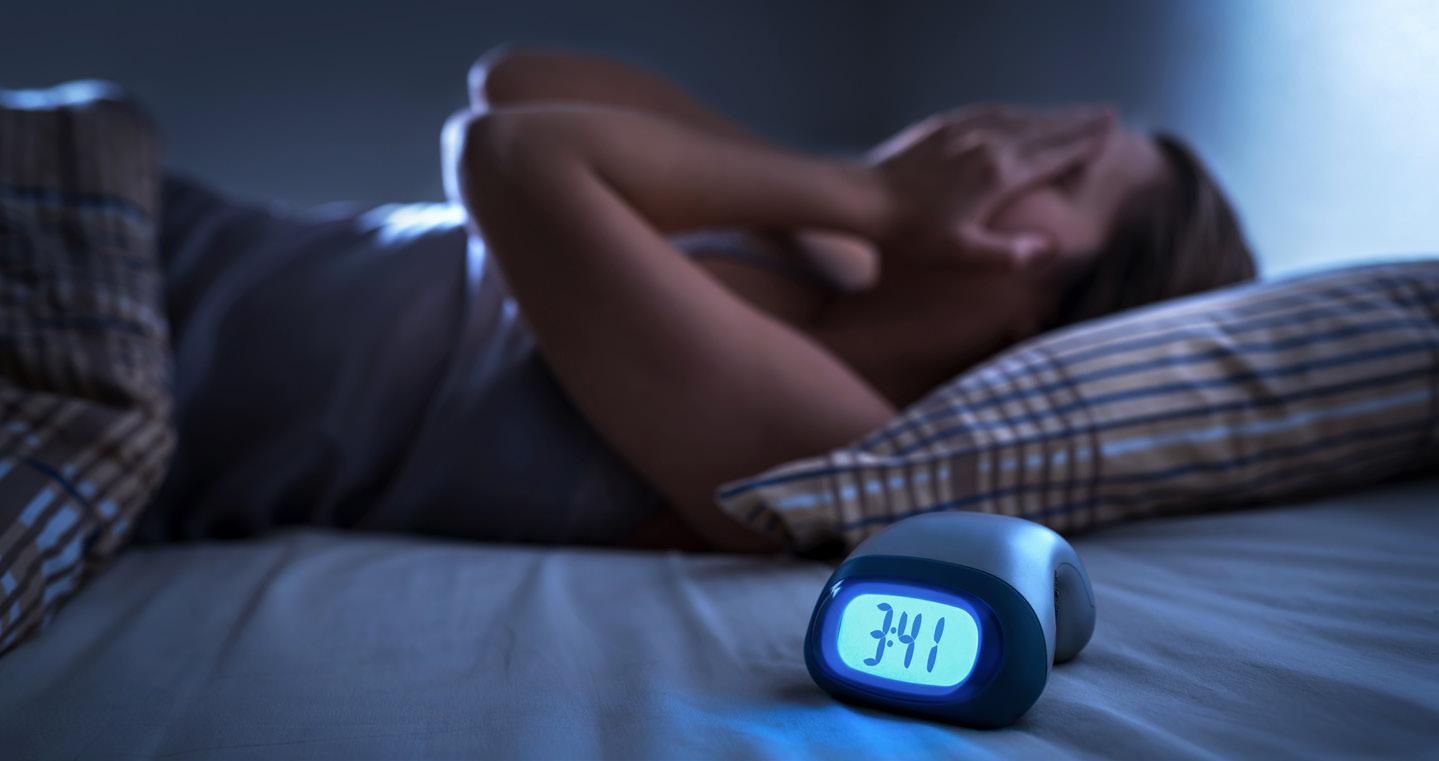
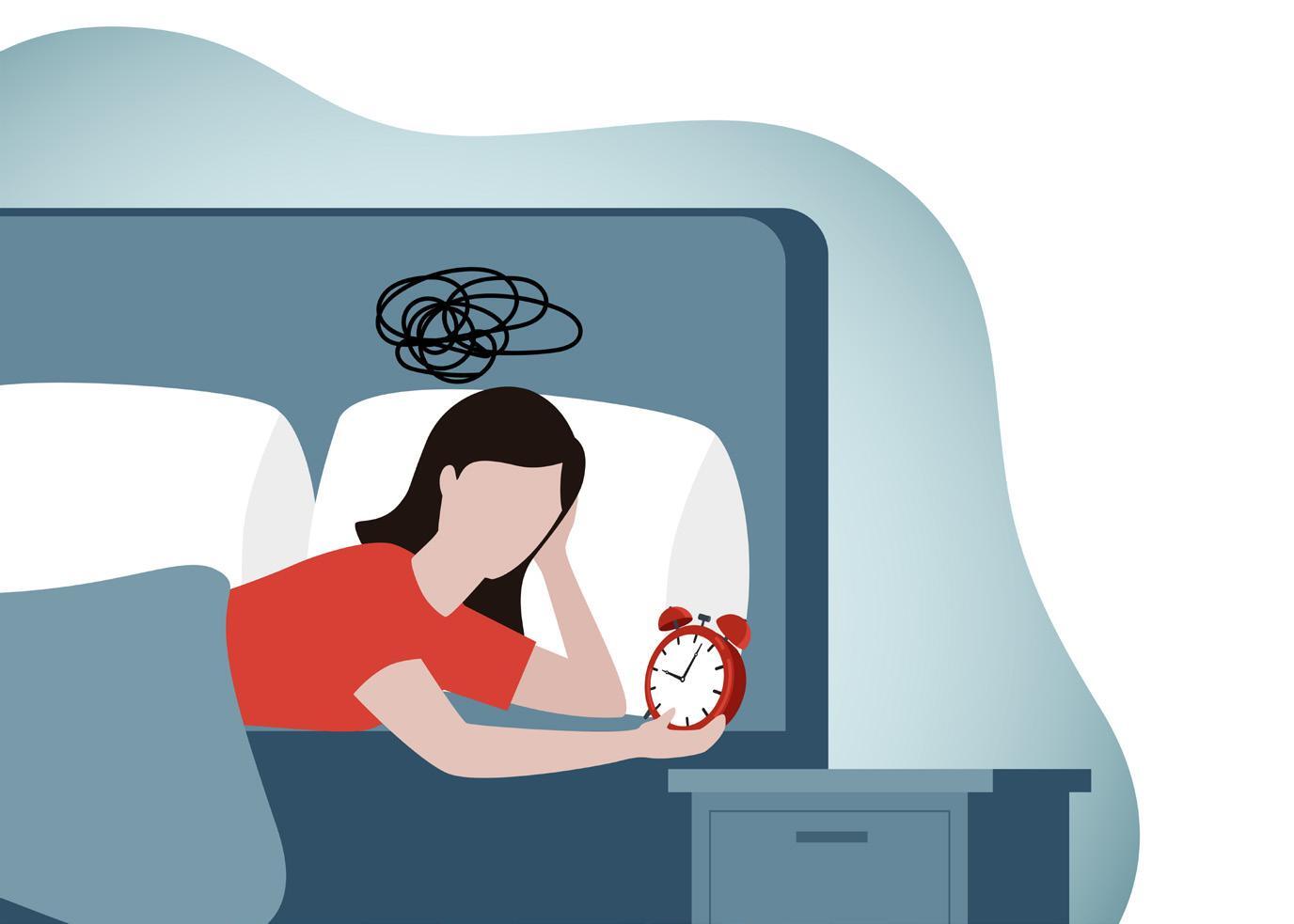
tions, or something else. Not resting well exacerbates any other physical or mental health issue going on. Unfortunately, many people wait for months or even years before seeking help with their sleeping problems.
The demand for sleep specialists is unlimited, since many people nationwide are not sleeping well for a variety of reasons.
The Bureau of Labor Statistics does not collect employment data for sleep specialists, since the specialty can be applied to so many different types of careers in a variety of environments. According to Glassdoor. com, the estimated pay of a sleep specialist is $58,440 annually and for a sleep medicine physician, $253,914 per year. Salary.com listed the average salary for a sleep technician as $62,101.
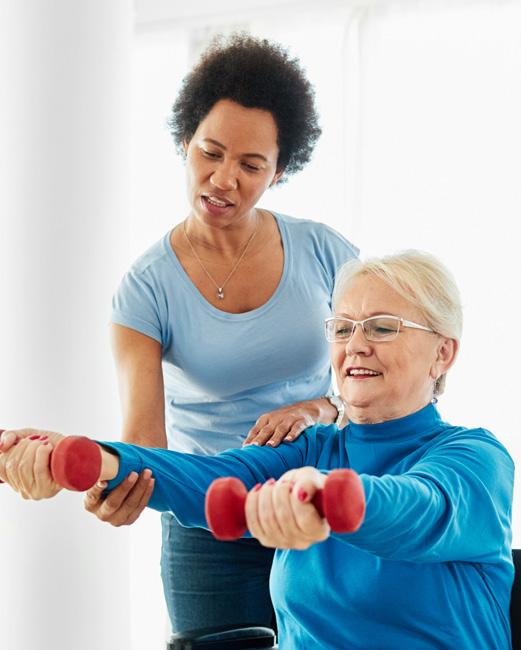
Does Medicare cover physical therapy, and if so, how much coverage do they provide? My 66-year-old husband was recently diagnosed with Parkinson’s disease and will need ongoing physical therapy to help keep him moving.
Worried Wife
Yes, Medicare does indeed pay for physical therapy along with occupational and speech therapy too, if he needs it, as long as it’s prescribed by his doctor. You’ll also be happy to know that Medicare has no limits on how much it will pay for therapy services, but there is an annual coverage threshold you should be aware of. Here’s what you should know.
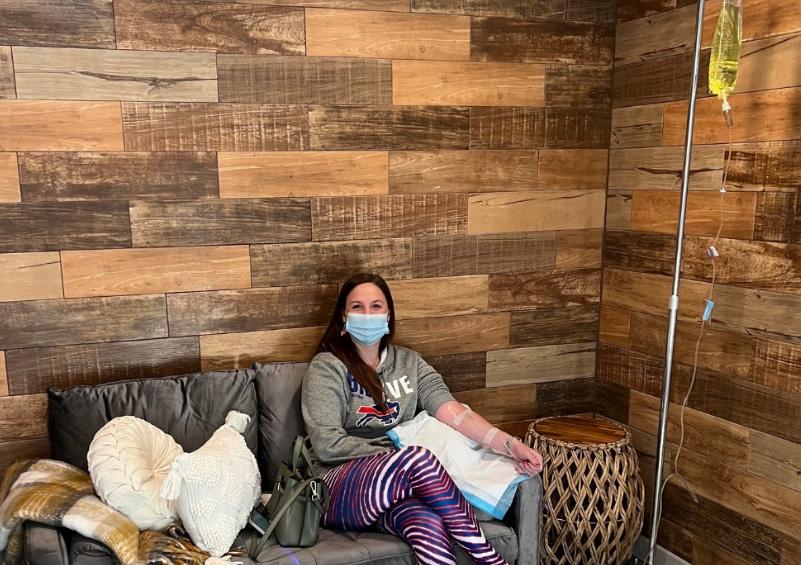
To get Medicare Part B — which covers outpatient care — to help cover your husband’s physical therapy, it must be considered medically necessary and will need to be ordered by his doctor. The same holds true for occupational and speech therapy.
He can get these services as an outpatient at a number of places like a doctor or therapist office; in a hospital outpatient department; at an outpatient rehabilitation facility; at skilled nursing facilities if he is being treated as an outpatient; and at home through a therapist connected with a home health agency when he is ineligible for Medicare’s home health benefit.

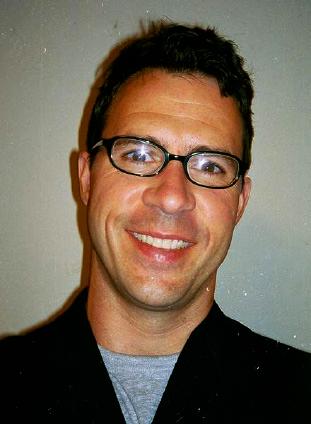
For outpatient therapy, Medicare will pay 80% of the Medicare-approved amount after you meet your Part B deductible ($226 in 2023). You will be responsible for the remaining 20% unless you have supplemental insurance.
But be aware that if his therapy costs reach $2,230 in a calendar year (2023), Medicare will require his provider to confirm that his therapy is still medically necessary. Medicare used to set annual limits on what it would pay for outpatient therapeutic services, but the cap was eliminated a few years back.
You also need to know that treatment recommended by a physical therapy provider but not ordered by a doctor is not covered. In this situation, the therapist is required to give your husband a written notice, called an Advance Beneficiary Notice of Noncoverage or ABN, that Medicare
may not pay for the service. If he chooses to proceed with the therapy, he is agreeing to pay in full.
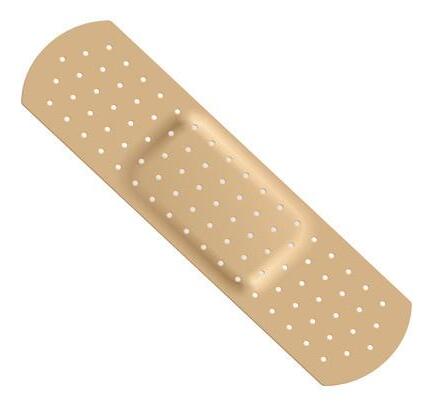
If your husband happens to need physical therapy at an inpatient rehabilitation facility like at a skilled nursing facility or at your home after a hospitalization lasting at least three days, Medicare Part A — which provides hospital coverage — will pick up the tab.
To be eligible, his doctor will need to certify that he has a medical condition that requires rehabilitation, continued medical supervision, and coordinated care that comes from his doctors and therapists working together.


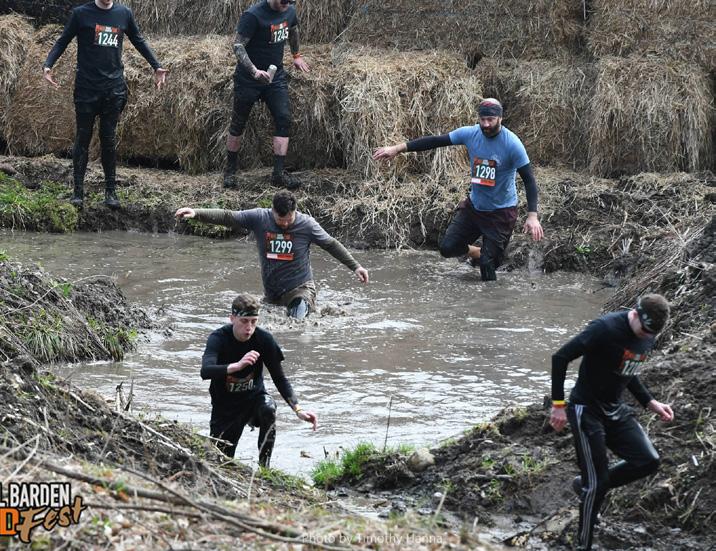
Whether you incur out-of-pocket costs such as deductibles and coinsurance, and how much they are, will depend on the setting for the treatment and how long it lasts. For more information on inpatient therapy out-of-pocket costs see Medicare. gov/coverage/inpatient-rehabilitation-care.
If your husband is enrolled in a Medicare Advantage plan (like an HMO or PPO), these plans must cover everything that’s included in original Medicare Part A and Part B coverage. However, some Advantage plans may require a person to use services from physical therapy practices within an agreed network. If he has an Advantage plan, you’ll need to contact his specific plan before selecting a physical therapy provider to confirm they’re within the network.
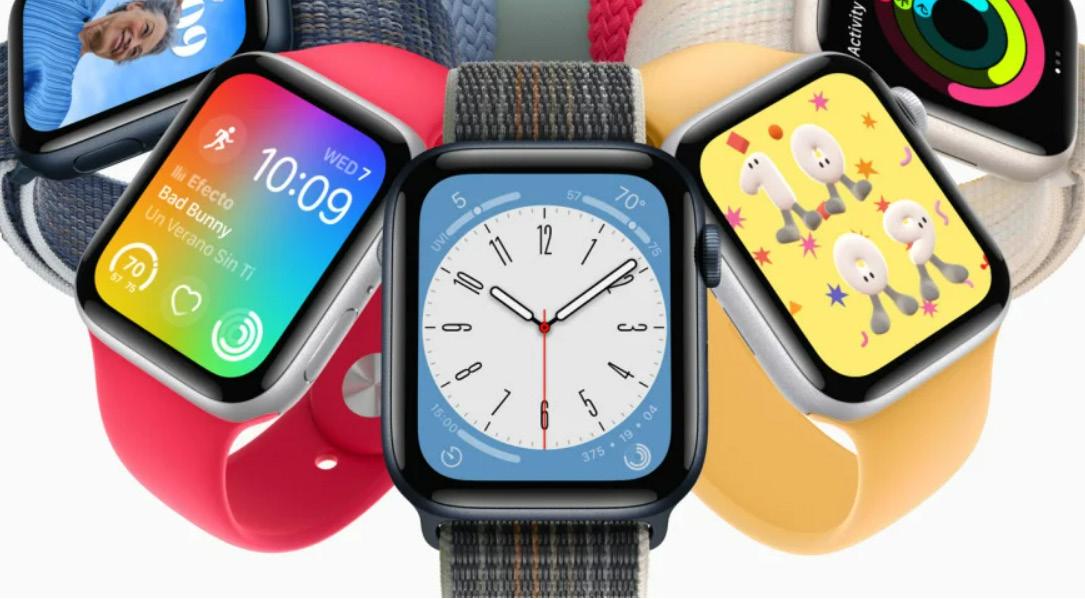
If you have other questions about coverage and costs for therapeutic services, call Medicare at 800-633-4227 or contact your State Health Insurance Assistance Program (SHIP), which provides free Medicare counseling. Visit ShipHelp.org or call 877-839-2675 to connect with a local SHIP counselor.

Rome Health hosted a ribbon cutting ceremony April 28 to dedicate its Women’s Surgical Suite in honor of Ankur Desai and Lauren Giustra, two longstanding obstetricians and gynecologists practicing at Rome Health. Located on thefourth floor of Rome Health’s main campus, the renovated square footage sits adjacent to the maternity department for enhanced patient safety. The scheduled opening of the new facility is planned for June 2023.
The suite’s main function will support mothers who may have scheduled or are in need of an emergency procedure. Rome Health has been recognized by U.S. News & World Report for its high performance in Maternity Services and extends its incredible gratitude to the amazing staff of nurses and doctors who work tirelessly to provide compassion and excellence in care.
The Women’s Surgical Suite was funded in part by a $3 million investment by the County of Oneida. Through the American Rescue Plan Act, County Executive Picente awarded Rome Health the impactful funds needed to complete the construction of the modern surgical suite. These funds are designed to support local communities in their response and recovery from the COVID-19 public health emergency. “The construction and use of a dedicated Women’s Surgical Suite is very important to all of us and to this community,” Picente added. “The generous ARPA funds have given us the opportunity to provide more to our people of Rome and Oneida
County.”
“The suite will be named in honor of two physician leaders who have served in this community for over 25 years,” said president and CEO of Rome Health AnneMarie Walker-Czyz. “They raised their family here and have made a lifetime commitment to Rome Health. We could not be more thankful for the service, generosity, and leadership both Dr. Desai and Dr. Giustra have shown to our community.”
Excellus BlueCross BlueShield has been recognized by Forbes as one of the best employers in America for diversity.
Excellus BCBS was one of 500 companies on the Forbes Best Employers for Diversity 2023 list.
• Excellus BCBS ranked 135th overall on the nationwide list
• Excellus BCBS ranked 17th overall in the insurance industry
This was Excellus BCBS’s first time on the Forbes Best Employers for Diversity list.
“Every day, our employees model inclusion, diversity, equity, and access — always working to see, value, and empower all people,” said Jim Reed, president and chief executive officer, Excellus BCBS. “We are honored by this recognition, and also acknowledge that when it comes to diversity, there is always more to do.”
The Best Employers for Diversity 2023 were selected based on a survey of about 45,000 U.S. employees work-
The Masonic Care Community has recently received sponsorship funding from Excellus BlueCross BlueShield to enhance its rehabilitation and fall prevention activities for the elders residing in the Health Pavilion.
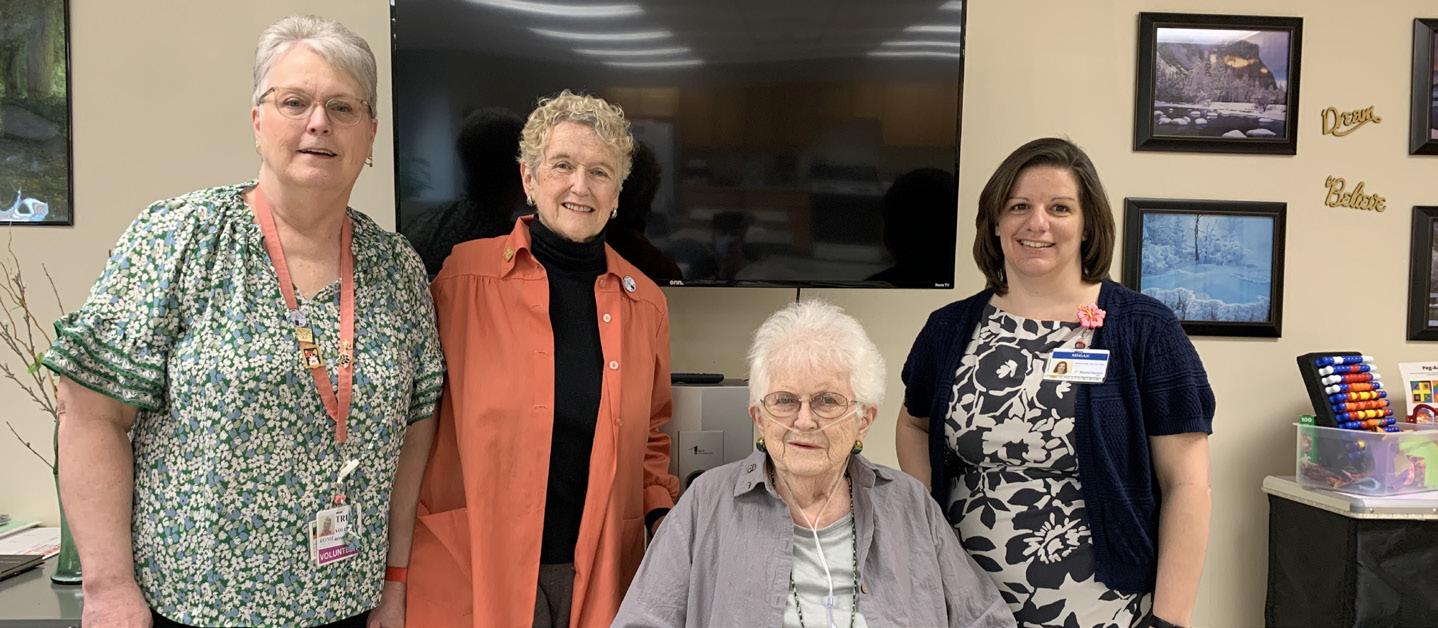

“We are thrilled to partner with Excellus BCBS again in support of promoting the health and wellness of our elders,” said Tamara Fontaine, administrator of the Masonic Care Community’s skilled nursing facility.
This funding will provide equipment and support for the rehabilitation program including investment in new equipment to help residents regain their equilibrium and balance.
These activities focus on decreasing instability that can contribute to potential fall risk as well as increasing the safety and efficiency of our staff.
“The ability to integrate balance and stability exercises into our rehabilitation and fall prevention programs is extremely important, especially when working with older adults,” said Fontaine. “We are incredibly grateful to Excellus BCBS for understanding the importance of this, and assisting us in ensuring we can provide a quality rehabilitation program that focuses not only on treatment but also on safety and the prevention of potential fall-related injuries.”
Members from the Rome Health Twigs recently joined Rome Health’s Residential Health Care Facility (RHCF) staff and residents to unveil the installation of a new TV in the activities room of which was donated by the Twigs. The TV was donated in remembrance of Ginny Rabe, a longtime member of the Rome Twigs and
Carol Rood who was a past president of the Twigs. A small plaque was created to be placed by the TV in their names. “We bought this TV in their honor because we were informed by the staff at RHCF that there was a need for one for the residents in the activity room.” said Ming Twig member Rita Reilley.
ing for companies with a minimum of 1,000 employees.
The recognition was based on the following criteria:
• Direct recommendations: Survey participants shared opinions on a series of statements regarding age, gender, ethnicity, disability, LGBTQA+ and general diversity in their current workplace.
• Indirect recommendations: Participants belonging to underrepresented groups also evaluated other employers in their industries.
• Data: Companies were evaluated on a range of diversity-related best practices, including the presence of resource groups within the company, the publication of diversity data and more.
The Best Employers for Diversity 2023 award was presented by Forbes and Statista Inc., a statistics portal and industry ranking provider. The full list is available on the Forbes website.
Earlier this year, Forbes also ranked Excellus BCBS as 2 on its 2023 list of America’s Best Midsize Employers.
Mohawk Valley Health System (MVHS) Foundation announced recently that the Oneida Indian Nation has made a $1 million donation in support of the new Wynn Hospital in downtown Utica. MVHS President/ CEO Darlene Stromstad, was joined by Oneida Indian Nation Representative and Oneida Nation Enterprises CEO Ray Halbritter, Oneida County
Executive Anthony J. Picente, Jr. and Larry Gilroy, Wynn Hospital Capital Campaign Co-Chair, to announce the donation at the Wynn Hospital site.
It was important to MVHS that as part of the Oneida Indian Nation’s donation there would be the commission of two pieces of art that will honor the shared history of the Oneida people and the region. A bronze sculpture created by artist Edward Hlavka called “Allies in War, Partners in Peace” will be located outside the hospital’s entrance.
The monument at Wynn Hospital will only be the second “Allies in War, Partners in Peace” ever created — the original is located at the Smithsonian’s National Museum of the American Indian in Washington D.C.
The original sculpture is a 20-foot bronze embodiment of the friendship that was forged between the Oneida Indian Nation and the United States during the Revolutionary War. It depicts George Washington, Oneida Indian Chief Shenendoah and Polly Cooper, an Oneida woman who traveled hundreds of miles to feed General Washington and his troops. All three individuals were critical in establishing the partnership between the Oneidas and the United States and defining a pivotal moment in history and Central New York’s role in the founding of the country.
The second piece of art the Oneida Indian Nation will commission at the Wynn Hospital is a mural that will honor the shared history and longtime partnership between Upstate New York and the Oneida Indian Nation. The mural will be prominently featured on the Central Utility Plant located on Columbia Street adjacent to the hospital.
Excellus BlueCross BlueShield provides year-round opportunities for sponsorship funding for initiatives that align with the health plan’s mission to help people lead healthier
and more secure lives through access to high-quality, affordable health care. For more information on funding opportunities visit www.excellusbcbs.com/community.

Rome Health contributes more than $158 million to the local economy annually, according to an economic impact analysis that projects the ripple effect of industry spending.

“As a major employer and purchaser of goods and services, we have a significant impact on the local economy,” said vice president and chief financial officer Dewey Rowlands. “More than $16 million in tax dollars are generated from the people we employ and the businesses that we support.”
“Jobs are the lifeblood of a community. Each paycheck impacts the economy, supporting businesses as dollars are spent on housing, groceries and other goods and services. Jobs fuel more jobs. As one of the largest employers in Rome, the hospital employs approximately 1,000 people,” Rowlands said.
Construction activity at Rome Health is also having a positive impact on the local economy. Building projects such as the medical center and the Women’s Surgical Suite generate local jobs and revenue and result in improved health care delivery for the community.
Because most of healthcare is funded through state and federal Medicaid/Medicare programs and private insurance, it’s often viewed as a burden on the economy, according to Rowlands. “However, the dollars are well spent. Every dollar spent on healthcare generates $1.60 in economic benefit for the community,” he said. “The return on investment is a better quality of life for the people who place their trust in our care and a significant positive economic impact on our community.”
“Hospitals are one of the few organizations that can have such a significant impact on a community’s vitality as both an economic powerhouse and provider of critical services,” he said. Rome Health provides a broad spectrum of services from emergency and intensive care to primary care, long-term care and diagnostic testing and treatment.
This new 30,000-square-foot facility will enable the Upstate Cancer Center to best serve community members in Madison and Oneida counties.

The Center will o er radiation oncology, hematology oncology, pathology and radiology services, and surgical clinics (urology) similar to those found at the main Upstate Cancer Center — without the need to travel to downtown Syracuse.
The Upstate Advantage for cancer care.